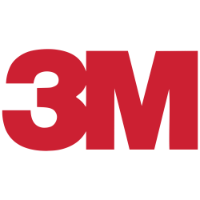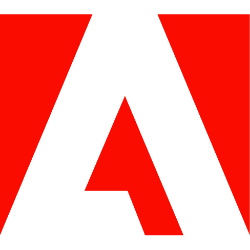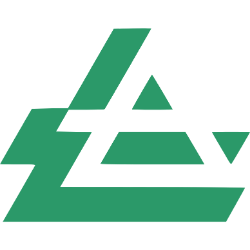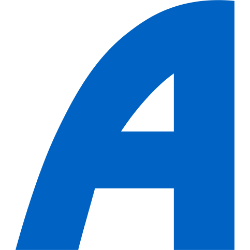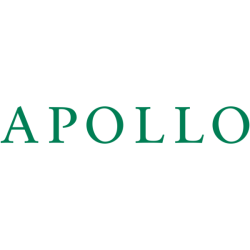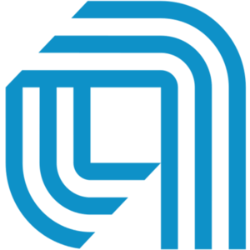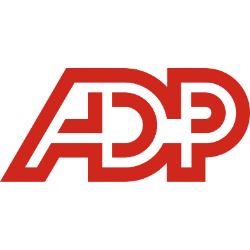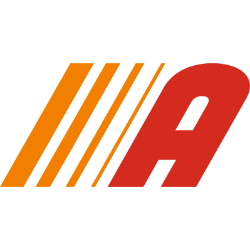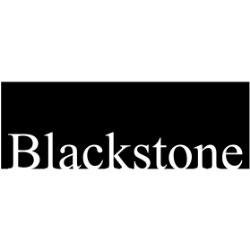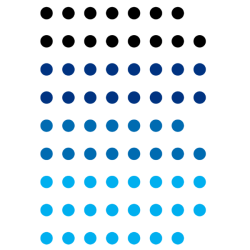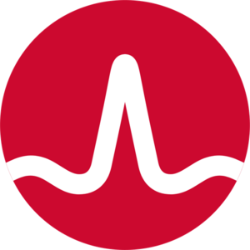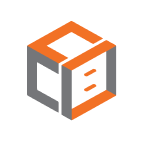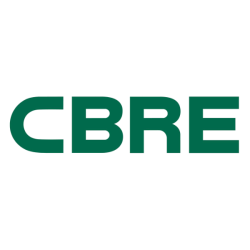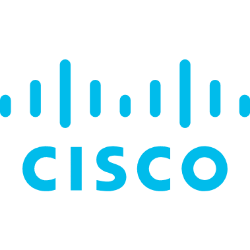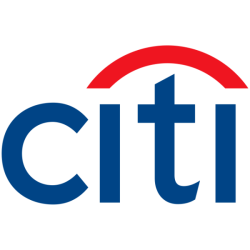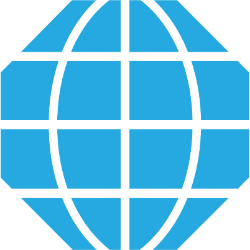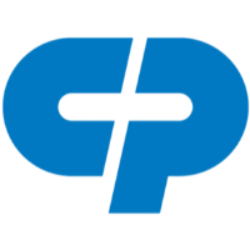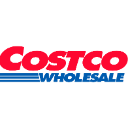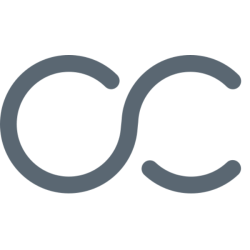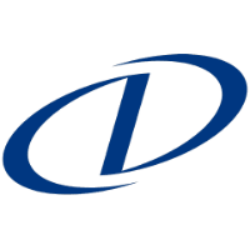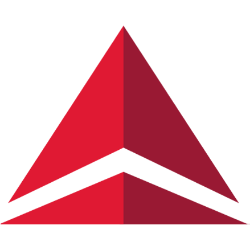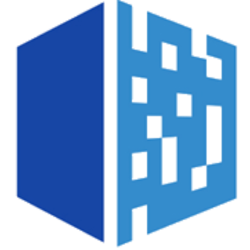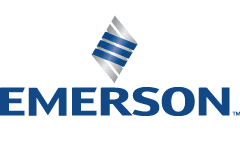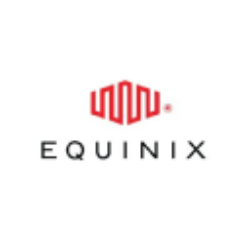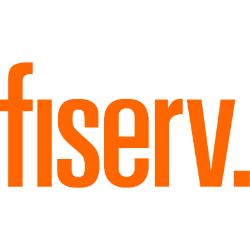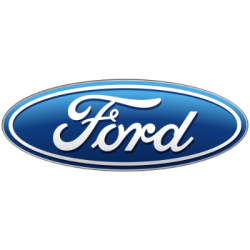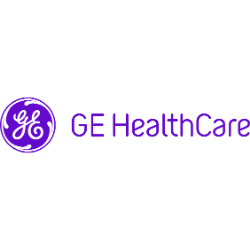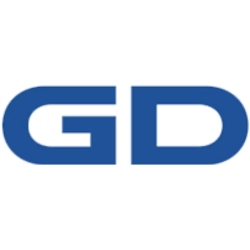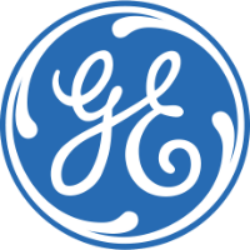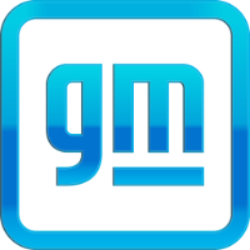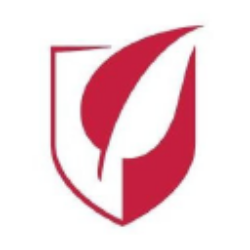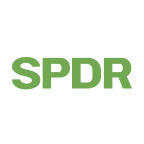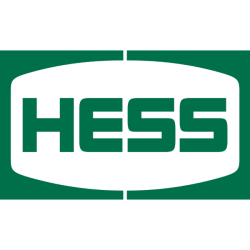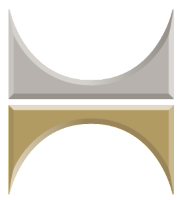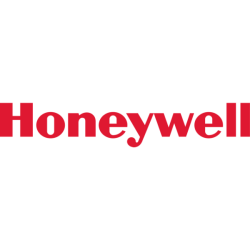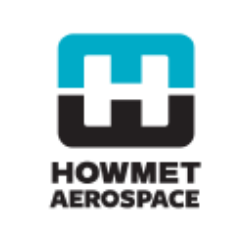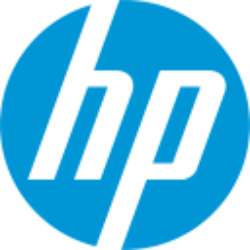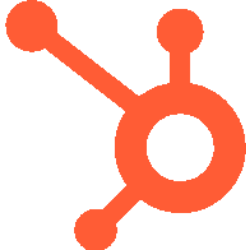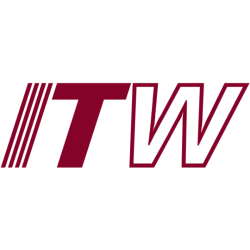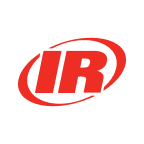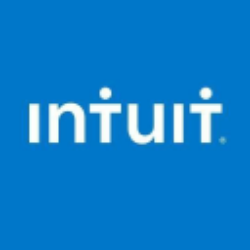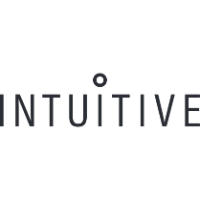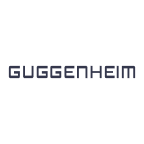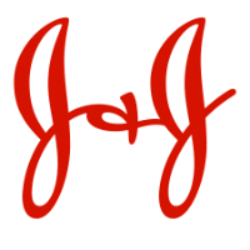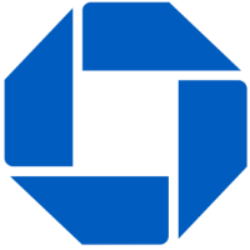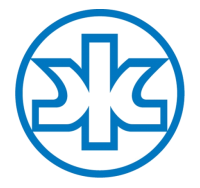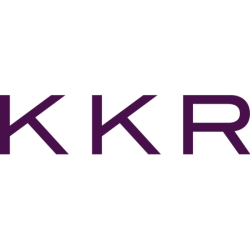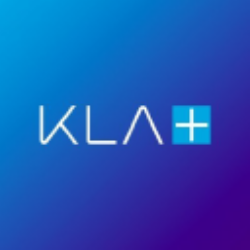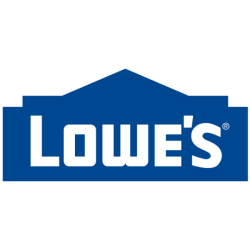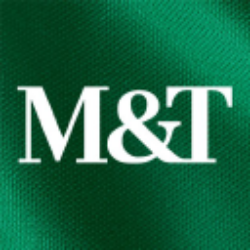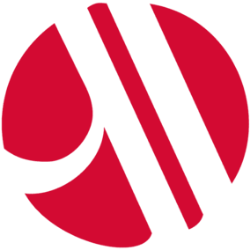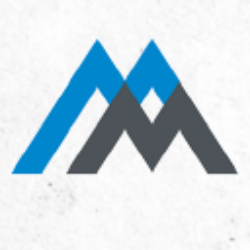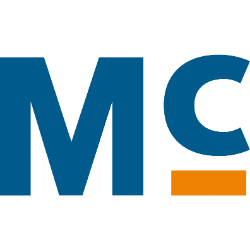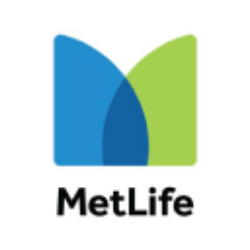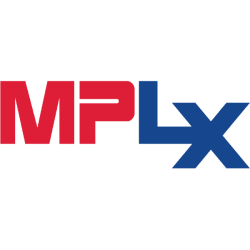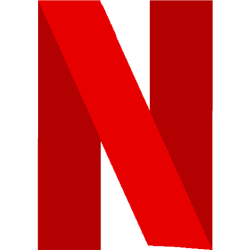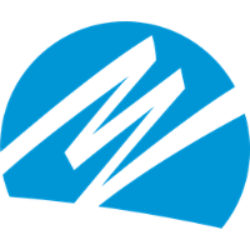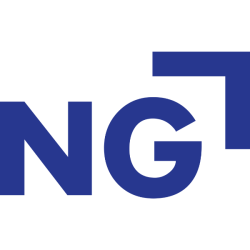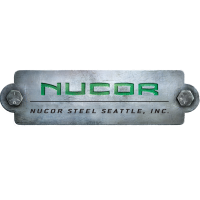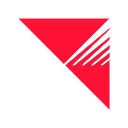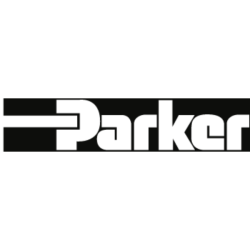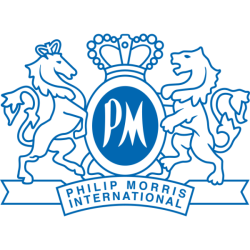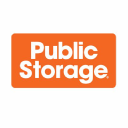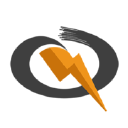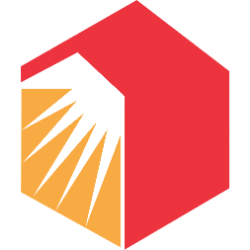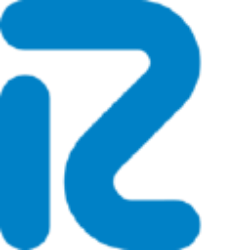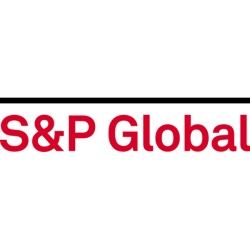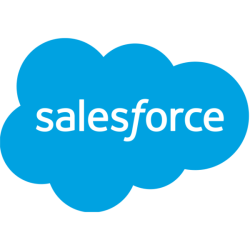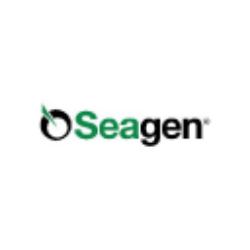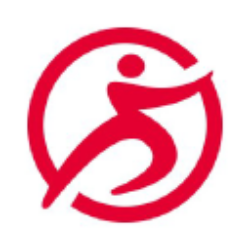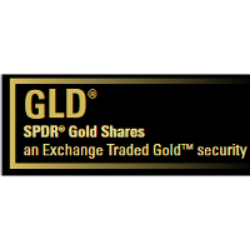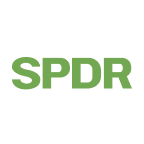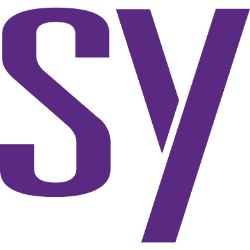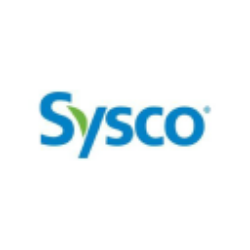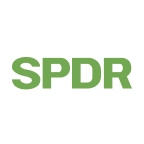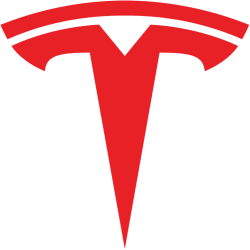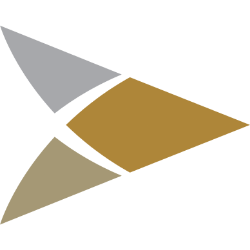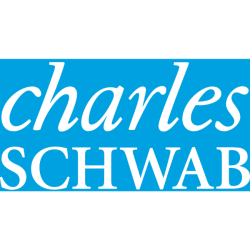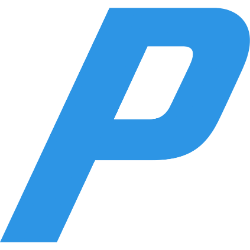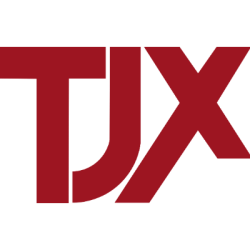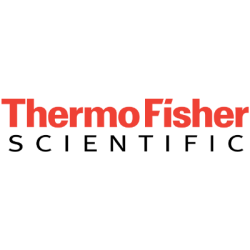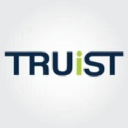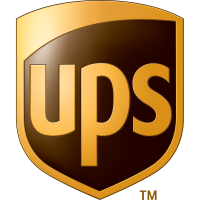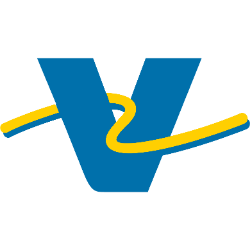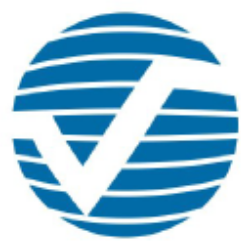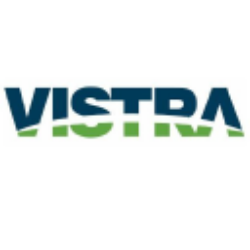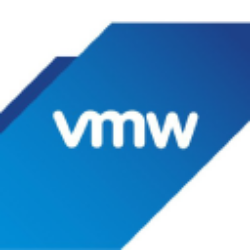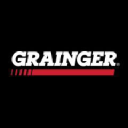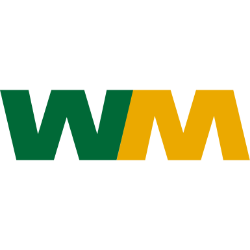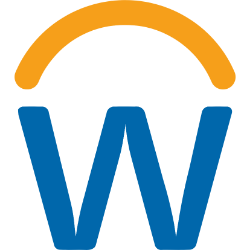Updated: June 7, 2025

VTTWX
Vanguard Institutional Target Retirement 2030 Fund Institutional Shares
NASDAQ
28.83
-0.24

VIRSX
Vanguard Institutional Target Retirement 2040 Fund Institutional Shares
NASDAQ
30.89
-0.36

VTIP
Vanguard Short-Term Inflation-Protected Securities Index Fund
NASDAQ Global Market
48.87
0.01
We have not found the stock you are looking for
Ticker
Loading
Market Cap
Loading
Revenue
Loading
EPS
Loading
PE Ratio
Loading
Volume
Loading
Dividend
Loading
Week Range
Loading
Beta
Loading
Frameworks
Name
Score
Company Overview
Loading
Applied Materials, Inc.
Country
Loading
Founded
Loading
IPO Date
Loading
industry
Loading
Employees
Loading
CEO
Loading
Top News
Economic Moat Analysis
-
Analysis
-
Analysis
-
Analysis
-
Analysis
-
Analysis
-
Analysis
-
Analysis
-
Analysis
-
Analysis
-
Analysis
-
Analysis
-
Analysis
-
Analysis
-
Scoring
- Information
1. 10Y Growth Analysis
Score: 8.5 (Strong)
This score reflects AMAT's strong strategic positioning, innovation capacity, and potential for significant growth, especially in the semiconductor equipment sector. Strategic investments and global expansion plans further bolster its long-term outlook.
2. Scenario Analysis
Score: 7.4 (Strong)
This score reflects AMAT's overall resilience and strategic positioning across various scenarios. The company demonstrates strong adaptability and an ability to capitalize on technological and market opportunities, while being mindful of regulatory and competitive challenges. Score without stress scenario: 7.6 – Resilient
3. Risk & Opportunities
Score: 7.2 (Strong)
The overall score reflects a strong position for AMAT, with ample opportunities outweighing the present risks. The company is well-placed to capitalize on the increasing demand for semiconductors and its technological advancements. However, it must manage geopolitical issues and supply chain disruptions to maintain its competitive edge.
4. Economic Moat
Score: 7.2 (Strong)
**Explanation**: AMAT exhibits strong competitive advantages, particularly in cost advantages, intangible assets, and switching costs. These strengths position the company well within its industry, although some areas have narrower moats.
5. Business Model
Score: 8.3 (Strong)
AMAT's business model is robust, characterized by innovative technology, strong customer relationships, and diversified revenue streams. While the company faces competition and challenges in emerging markets, its strategic initiatives and solid financial position support continued growth and industry leadership.
6. Management Analysis
Score: 8.5 (Strong)
The overall score reflects a competent and strategically aligned management team that excels in innovation and adaptability while maintaining operational efficiency and leadership stability. The team has demonstrated a strong track record of growth, effective crisis management, and a clear strategic vision that positions the company for future success.
7. BCG Matrix
Score: 8.0 (Strong)
AMAT's overall performance is strong, with significant growth potential in its star categories and stable revenue from its cash cows. However, it faces challenges in some areas that require strategic attention to avoid obsolescence.
8. SWOT Analysis
Score: 7.4 (Strong)
AMAT’s overall score reflects significant strengths and opportunities that outweigh its weaknesses and threats. The company’s leading market position, strong financial performance, and robust R&D capabilities provide a solid foundation for leveraging growth in technologies like AI and IoT. However, challenges such as high dependency on the semiconductor industry and regulatory risks need strategic management.
9. Porter's 5 Forces
Score: 6.4 (Balanced)
AMAT operates in a dynamic industry with moderate forces from suppliers and buyers, low threats from new entrants and substitutes, but significant industry rivalry. The company's strong brand, technological barriers, and strategic initiatives help mitigate these forces.
10. PESTLE Analysis
Score: 7.0 (Strong)
The overall score of 7.0 reflects a positive impact on AMAT, driven primarily by technological advancements and economic growth prospects. While political and legal factors pose certain challenges, the Company's strong focus on innovation and sustainability positions it well for future growth.
11. ESG Analysis
Score: 8.0 (Strong)
AMAT demonstrates a strong commitment to sustainable and ethical practices across environmental, social, and governance criteria. The company excels in governance and environmental initiatives while maintaining good social practices, positioning it as a responsible and forward-thinking entity in its industry.
12. Company Milestones
Score: 7.5 (Strong)
No summary available.
Final Overall Score
Score: 7.7 (Strong)
The Final Overall Score of 7.7 for Applied Materials, Inc. (AMAT) suggests a positive assessment of the stock’s performance, indicative of strong fundamentals and favorable market conditions. This score reflects several key strengths: 1. **Financial Performance**: AMAT likely has a solid financial foundation, characterized by strong revenue growth, robust profit margins, and effective cost management. These factors contribute to its ability to generate consistent returns for investors. 2. **Market Position**: As a leader in the semiconductor industry, AMAT benefits from a strong market position and competitive advantages, such as technological innovation and a broad product portfolio. This positioning allows it to capitalize on industry trends, particularly the growing demand for semiconductors. 3. **Innovation and R&D**: AMAT’s commitment to research and development likely supports continuous innovation, enabling it to maintain a technological edge and meet the evolving needs of its customers. 4. **Outlook**: The outlook for AMAT appears promising, driven by favorable industry dynamics and strategic initiatives. The global push towards digitalization, increased demand for electronics, and advancements in technology all bode well for AMAT’s future growth prospects. Overall, the score of 7.7 reflects a well-rounded assessment of AMAT’s current performance and future potential. However, investors should remain vigilant about potential risks such as market volatility and geopolitical factors that could impact the semiconductor industry.
Future Outlook
To provide a future outlook for Applied Materials, Inc. (AMAT), it’s crucial to consider several key factors affecting the stock and the semiconductor industry as a whole: 1. **Industry Trends**: The semiconductor industry is cyclical, and demand can be influenced by technological advancements, consumer electronics, automotive needs, and data center expansion. There’s a growing demand for semiconductors due to advancements in AI, 5G, and IoT, which could positively impact AMAT. 2. **Financial Performance**: Assessing AMAT’s recent financial performance, including revenue growth, profit margins, and cash flow, can provide insights. A strong balance sheet and consistent revenue growth can be positive indicators. 3. **Market Position**: AMAT is a key player in the semiconductor equipment market. Its ability to innovate and maintain a competitive edge in technology and cost efficiency will be crucial for its future prospects. 4. **Geopolitical Factors**: Trade tensions and regulations, especially between the U.S. and China, can impact AMAT’s operations and supply chain. Monitoring these developments is important. 5. **Investment in R&D**: AMAT’s investment in research and development can drive future growth through innovation and improved product offerings, keeping it competitive. 6. **Analyst Ratings and Forecasts**: Analyst projections and ratings can provide a consensus view of the stock’s future performance. Positive ratings and upward revisions in price targets can be encouraging. 7. **Macroeconomic Conditions**: Broader economic conditions, including interest rates and global economic growth, can impact investor sentiment and demand for technology products. Based on these factors, if AMAT continues to innovate, effectively manage geopolitical and supply chain risks, and capitalize on growing semiconductor demand, its future outlook could be positive. However, investors should remain vigilant of industry cycles and external economic factors.
3-Year Growth Prospects
Score: 8.0 – Steady
– Continued Innovation in Semiconductor Equipment: AMAT is expected to maintain its leadership through continuous innovation in semiconductor manufacturing equipment.
*Example: The recent launch of AI-driven process control systems enhances production efficiency.*
– Strong Backlog and Demand: There is a robust backlog of orders, indicating steady demand for AMAT’s products in the near term.
*Example: A significant increase in orders from major semiconductor manufacturers like TSMC and Intel.*
– Strategic Partnerships: Collaborations with key technology firms are set to enhance product offerings.
*Example: Partnership with IBM for developing next-generation chip technologies.*
– Focus on Sustainability: Investment in sustainable manufacturing practices is aligning with global trends.
*Example: Implementation of energy-efficient solutions in manufacturing processes.*
– Revenue Growth from Emerging Markets: Expansion into emerging markets is likely to contribute to revenue growth.
*Example: Increased penetration in Asia-Pacific regions, leveraging local partnerships.*
5-Year Growth Prospects
Score: 8.5 – Steady
– Diversification into New Technologies: AMAT’s efforts in diversifying into new technology areas are expected to pay off.
*Example: Entry into the display technology market to capture OLED and flexible display manufacturing.*
– R&D Investment Yielding Results: Increased R&D investment is anticipated to result in advanced technological solutions.
*Example: Development of cutting-edge nanotechnology processes.*
– Market Share Expansion: A focus on expanding market share in existing segments will drive growth.
*Example: Capturing a larger share of the semiconductor etching and deposition equipment market.*
– Supply Chain Optimization: Improvements in supply chain efficiency will enhance operational performance.
*Example: Adoption of digital supply chain platforms to reduce lead times and costs.*
– Increased Adoption of New Materials: The shift towards advanced materials in semiconductor fabrication is a growth driver.
*Example: Adoption of new substrates and materials for next-gen chip manufacturing.*
10-Year Growth Prospects
Score: 9.0 – High
– Leadership in Semiconductor Equipment: AMAT is poised to lead the future of semiconductor equipment through sustained innovation.
*Example: Dominance in EUV lithography equipment for advanced node processes.*
– Long-Term Strategic Investments: Strategic investments in key growth areas will solidify long-term prospects.
*Example: Long-term investments in photonics and quantum computing technologies.*
– Global Expansion Strategy: An aggressive global expansion strategy will enhance AMAT’s market presence.
*Example: Establishment of new manufacturing and R&D facilities in Europe and Asia.*
– Adaptation to Industry Shifts: Proactive adaptation to industry shifts such as AI and IoT integration will drive demand.
*Example: Development of AI-enabled manufacturing systems for smart factories.*
– Sustainability Leadership: Commitment to sustainability will attract ESG-focused investments and partnerships.
*Example: Implementing comprehensive sustainability programs across all operations.*
Overall Score: 8.5/10
This score reflects AMAT’s strong strategic positioning, innovation capacity, and potential for significant growth, especially in the semiconductor equipment sector. Strategic investments and global expansion plans further bolster its long-term outlook.
Future Outlook
Applied Materials (AMAT) is well-positioned to capitalize on market trends and technological advancements over the next decade. The company’s focus on innovation, strategic partnerships, and global expansion will likely secure its leadership in the semiconductor equipment space. As AMAT continues to adapt to industry shifts and invest in sustainable practices, it is poised for substantial growth. Investors can expect steady returns driven by a robust pipeline of advanced technologies and a strong global presence.
Scenario 1: Economic Downturn
Score: 7.5 – Resilient
– Reduced consumer spending: AMAT’s diversified portfolio across semiconductor equipment and services helps mitigate risks associated with lower consumer spending.
*Example: During the 2020 economic downturn, AMAT maintained stable revenues through its service contracts and diverse client base.*
– Supply chain disruptions: Established global supply networks enhance resilience against disruptions.
*Example: AMAT’s strategic supplier partnerships helped avoid major production halts during recent supply chain crises.*
– Lower investment in infrastructure: Dependency on tech infrastructure investments could pose challenges but is offset by the ongoing digital transformation.
*Example: Despite reduced infrastructure investments in some sectors, demand for semiconductor manufacturing equipment remains strong.*
– Increased competition for limited resources: Efficient resource management strategies aid in mitigating the competitive pressure for raw materials.
*Example: AMAT has invested in sustainable sourcing practices to manage resource constraints.*
– Pressure on stock prices: Historical performance shows stock resilience due to strong financial fundamentals and market positioning.
*Example: Despite market volatility, AMAT’s stock prices rebounded quickly after initial pandemic-induced drops.*
Scenario 2: Technological Disruption
Score: 8.2 – Resilient
– Advancements in battery technology: AMAT’s innovation focus positions it well to capitalize on battery tech advancements.
*Example: Collaborative projects on next-generation battery materials with key industry players.*
– Autonomous driving technology: Investment in semiconductor solutions for autonomous vehicles supports growth.
*Example: Partnerships with major automotive tech firms to develop advanced driver-assistance systems (ADAS).*
– Energy storage solutions: Strong R&D in energy-efficient technologies helps penetrate the expanding energy storage market.
*Example: Development of semiconductor solutions for leading energy storage companies.*
– Integration of AI and machine learning: AMAT leverages AI/ML to enhance manufacturing processes and product offerings.
*Example: Implementation of AI-driven analytics to improve semiconductor yields and production efficiency.*
– Expansion into new tech domains: Strategic acquisitions and investments enable entry into emerging tech areas.
*Example: Acquisition of companies specializing in quantum computing and photonics.*
Scenario 3: Regulatory Changes
Score: 6.8 – Mixed
– Stringent emissions standards: Compliance with evolving environmental regulations through green manufacturing initiatives.
*Example: AMAT’s reduction of carbon footprint in its manufacturing processes.*
– Government incentives: Beneficial from subsidies and tax breaks for sustainable tech development.
*Example: Utilization of government grants for renewable energy technology projects.*
– Changes in trade policies: Exposure to geopolitical tensions poses risk, but diversified global operations mitigate impact.
*Example: Trade policy shifts causing temporary supply chain adjustments but minimal disruption.*
– Safety and data regulations: Proactive approach to regulatory compliance strengthens market trust.
*Example: Implementation of robust data protection measures in line with global standards.*
– Support for renewable energy: Positioned to benefit from increased governmental support for green technologies.
*Example: Expansion of product lines catering to solar and wind energy sectors.*
Scenario 4: Market Expansion
Score: 8.5 – Resilient
– Emerging markets: Growing presence in Asia and other emerging markets supports revenue growth.
*Example: Establishment of new facilities in Southeast Asia to tap into burgeoning tech markets.*
– Increased urbanization: Urban tech demands boost sales of semiconductor equipment.
*Example: Partnership with urban tech initiatives to provide semiconductor solutions for smart city projects.*
– Rising environmental awareness: Products aligned with eco-friendly trends attract environmentally conscious clients.
*Example: Launch of eco-efficient semiconductor products with lower energy consumption.*
– Expansion of product portfolio: Continuous innovation and product diversification strengthen competitive edge.
*Example: Introduction of new semiconductor equipment targeting the AI and IoT sectors.*
– Strategic partnerships: Collaborations with industry leaders enhance competitive positioning.
*Example: Joint ventures with tech giants to co-develop next-gen semiconductor solutions.*
Scenario 5: Competitive Pressure
Score: 7.0 – Resilient
– Increased EV competition: AMAT’s technological advancements in semiconductor solutions for EVs mitigate competition.
*Example: Supply agreements with leading EV manufacturers for innovative chip solutions.*
– Technological advancements by competitors: Continuous R&D investments maintain technological leadership.
*Example: Development of unique semiconductor processes that set industry benchmarks.*
– Pricing pressure: Operational efficiencies and economies of scale help manage pricing challenges.
*Example: Cost reduction strategies enabling competitive pricing without sacrificing margins.*
– Brand loyalty challenges: Strong customer relationships and service excellence enhance brand loyalty.
*Example: High customer retention rates due to superior post-sales support and service contracts.*
– Supply chain competition: Strategic inventory management and supplier diversification reduce supply chain risks.
*Example: Implementation of advanced supply chain analytics to optimize inventory levels.*
Scenario 6: Stress Scenario
Score: 6.5 – Mixed
– Severe economic recession: Diversified revenue streams provide a buffer against severe economic downturns.
*Example: Resilience during past recessions due to stable demand for semiconductor services.*
– Major technological disruptions: Proactive innovation and adaptability enable recovery from disruptions.
*Example: Rapid development of new technologies in response to industry shifts.*
– Extreme regulatory changes: While challenging, regulatory agility helps navigate changes effectively.
*Example: Quick compliance with new international trade regulations.*
– Significant market contraction: Broad market presence lessens the impact of contractions in specific regions.
*Example: Balanced revenue distribution across multiple high-growth regions.*
– Intense competitive landscape: Strong R&D pipeline and strategic collaborations offset competitive pressures.
*Example: Industry recognition for pioneering semiconductor technologies.*
Overall Score: 7.4/10
This score reflects AMAT’s overall resilience and strategic positioning across various scenarios. The company demonstrates strong adaptability and an ability to capitalize on technological and market opportunities, while being mindful of regulatory and competitive challenges.
Score without stress scenario: 7.6 – Resilient
Future Outlook
AMAT shows robust potential across most scenarios, driven by its diverse portfolio and strategic initiatives in emerging tech domains. The company is well-positioned to leverage technological advancements and market expansions while navigating regulatory and competitive challenges with agility. Continued investment in innovation and strategic partnerships will be crucial to maintaining its resilient stance in the face of potential disruptions.
Risks
Score: 6.2 – Moderate
– Supply Chain Disruptions: Continued global supply chain issues could hinder production timelines and increase costs.
*Example: Recent semiconductor shortages have delayed production schedules, impacting delivery commitments.*
– Geopolitical Tensions: Trade tensions, particularly between the US and China, could affect market access and supply chain stability.
*Example: Export restrictions on semiconductor technology could limit AMAT’s ability to service certain markets.*
– Market Volatility: Economic uncertainty and market volatility could negatively impact demand for semiconductor equipment.
*Example: Fluctuations in consumer electronics demand have historically affected equipment orders.*
– Technological Obsolescence: Rapid technological changes could render current products obsolete if AMAT fails to innovate.
*Example: The shift towards advanced node technology requires continuous R&D investment to stay competitive.*
– Environmental Regulations: Stricter environmental regulations could increase operational costs and require additional investments in compliance.
*Example: New emissions standards could necessitate upgrades to manufacturing facilities, impacting profitability.*
Opportunities
Score: 8.1 – Strong
– Rising Semiconductor Demand: Growing demand for semiconductors driven by sectors like AI, IoT, and 5G presents significant growth prospects.
*Example: Increased chip usage in automotive and consumer electronics sectors is boosting equipment sales.*
– Technological Leadership: AMAT’s strong R&D capabilities position it well to lead in new semiconductor technologies.
*Example: Recent innovations in etch and deposition technologies have strengthened its competitive edge.*
– Strategic Partnerships: Collaborations with key industry players can enhance AMAT’s market position and innovation capacity.
*Example: Partnership with leading chipmakers to co-develop next-generation manufacturing processes.*
– Sustainability Initiatives: Investment in sustainable technologies can open new markets and improve brand reputation.
*Example: Development of energy-efficient manufacturing solutions is attracting environmentally conscious clients.*
– Expansion into Emerging Markets: Growth in emerging markets offers new revenue streams and diversification opportunities.
*Example: Establishing a stronger presence in Southeast Asia to capitalize on rapid industrial growth.*
Overall Score: 7.2/10
The overall score reflects a strong position for AMAT, with ample opportunities outweighing the present risks. The company is well-placed to capitalize on the increasing demand for semiconductors and its technological advancements. However, it must manage geopolitical issues and supply chain disruptions to maintain its competitive edge.
Future Outlook
AMAT’s future outlook is promising, with strong growth prospects driven by the surge in semiconductor demand across various industries. The company’s commitment to innovation and strategic partnerships enhances its market position, while efforts in sustainability align with global trends. Addressing supply chain challenges and navigating geopolitical uncertainties will be crucial to sustaining growth. Overall, AMAT is poised for continued success, provided it remains agile and responsive to market dynamics.
Economic Moat Analysis for AMAT
Cost Advantages
Score: 7.5 Strong
– Economies of Scale: AMAT benefits from economies of scale due to its extensive manufacturing capabilities, allowing it to reduce per-unit costs.
Example: *AMAT’s large-scale production facilities enable it to negotiate better terms with suppliers, lowering material costs.*
– Supply Chain Optimization: The company has optimized its supply chain to minimize costs and enhance efficiency.
Example: *AMAT’s strategic partnerships with key suppliers reduce lead times and inventory costs.*
– Advanced Manufacturing Techniques: Investment in automation and advanced manufacturing processes lowers labor costs and increases efficiency.
Example: *Robotic automation in AMAT’s production lines decreases manual labor needs and increases throughput.*
– Sourcing Strategy: Diversified sourcing strategy reduces dependency on any single supplier, stabilizing costs.
Example: *AMAT sources components from multiple regions to mitigate risks associated with geopolitical tensions.*
– R&D Investment: Significant R&D investment leads to cost-efficient product innovations.
Example: *The development of a new, more efficient semiconductor fabrication process reduces material waste.*
Network Effects
Score: 5.8 Narrow
– Customer Ecosystem: A strong network of existing customers encourages new users to adopt AMAT products.
Example: *Semiconductor manufacturers often choose AMAT due to the widespread use of its tools across the industry.*
– Industry Standard Tools: AMAT’s equipment is considered a standard in many fabrication processes, increasing adoption among peers.
Example: *Many semiconductor fabs prefer AMAT’s tools due to compatibility with existing systems.*
– Collaborative Partnerships: Strategic alliances with other tech firms enhance product development and adoption.
Example: *Collaborations with leading chip manufacturers foster co-development of new technologies.*
– Data Sharing Platforms: Platforms that allow customers to share performance data can drive network benefits.
Example: *AMAT’s data analytics tools enable customers to optimize processes, attracting more users.*
– Customer Dependency: High dependency on AMAT’s technology creates a lock-in effect, further entrenching its market position.
Example: *Switching from AMAT tools often requires significant overhaul and re-training, deterring change.*
Intangible Assets
Score: 8.2 Strong
– Patented Technologies: AMAT holds numerous patents, protecting its technological innovations and market position.
Example: *Patents on new semiconductor processes prevent competitors from copying key technologies.*
– Brand Reputation: A strong brand reputation enhances customer trust and loyalty.
Example: *AMAT is known for reliability and innovation in the semiconductor equipment industry.*
– Proprietary Software: Development of proprietary software solutions enhances product value.
Example: *Custom software for equipment operation offers superior integration and efficiency.*
– Trade Secrets: Retention of trade secrets in manufacturing processes offers a competitive edge.
Example: *Unique process improvements are kept in-house, preventing competitors from replicating them.*
– Strong R&D Pipeline: Continuous innovation through a robust R&D pipeline sustains competitive advantages.
Example: *Ongoing development of cutting-edge technologies keeps AMAT at the forefront of the industry.*
Switching Costs
Score: 7.8 Strong
– High Integration Costs: Switching to a competitor involves high costs due to integration complexity.
Example: *Semiconductor fabs face significant costs in retraining staff and reconfiguring systems.*
– Technical Support and Services: Dependence on AMAT’s technical support and services increases switching barriers.
Example: *Ongoing maintenance contracts and technical support solidify customer relationships.*
– Customized Solutions: Tailored solutions for clients create dependency and increase switching difficulty.
Example: *Custom configurations designed for specific manufacturing setups are hard to replace.*
– Long-Term Contracts: Long-term service agreements bind customers to AMAT’s products and services.
Example: *Extended warranties and service contracts encourage continued use of AMAT equipment.*
– Equipment Compatibility: Ensuring compatibility with existing equipment deters switching to competitors.
Example: *AMAT tools are designed to integrate seamlessly with other equipment, reducing incentives to switch.*
Efficient Scale
Score: 6.5 Narrow
– Dominant Market Segments: AMAT capitalizes on specific market segments where it holds a strong market position.
Example: *The company dominates in certain semiconductor manufacturing equipment categories.*
– Focused Production Facilities: Specialized facilities for certain products optimize production and reduce costs.
Example: *Dedicated plants for specific equipment lines enhance production efficiency.*
– Niche Market Expertise: Deep expertise in niche markets allows AMAT to maintain competitive pricing.
Example: *Proficiency in high-end semiconductor equipment offers significant market leverage.*
– Regional Dominance: Strong regional market presence reduces competition and maximizes local efficiencies.
Example: *AMAT’s large footprint in Asia provides a competitive advantage over smaller players.*
– Limited Competition: High entry barriers in certain segments limit the number of competitors.
Example: *Complex technology and capital requirements restrict new entrants in high-tech equipment markets.*
Overall Score: 7.2/10
Explanation: AMAT exhibits strong competitive advantages, particularly in cost advantages, intangible assets, and switching costs. These strengths position the company well within its industry, although some areas have narrower moats.
Future Outlook
AMAT’s economic moat is reinforced by its technological leadership and customer loyalty driven by high switching costs and patented innovations. Going forward, the company is poised to capitalize on the growing demand for semiconductor manufacturing equipment, particularly as global digitalization and IoT adoption continue to rise. Focus on sustainable R&D investments and strategic partnerships will likely enhance its long-term competitive position. However, maintaining cost advantages amidst fluctuating supply chain dynamics will be crucial. As such, AMAT’s ability to innovate and adapt to industry shifts remains vital for sustaining its strong competitive edge.
Value Proposition
Score: 8.5 – Strong
– Innovative Technology Solutions: AMAT’s cutting-edge semiconductor manufacturing equipment offers a competitive edge in efficiency and performance.
– Comprehensive Product Portfolio: The wide range of products allows AMAT to cater to diverse customer needs across the semiconductor industry.
– Sustainability Focus: Commitment to sustainable practices enhances brand reputation and aligns with increasing market demand for eco-friendly solutions.
– Customer-Centric Approach: Tailored solutions and services foster strong customer loyalty and repeat business.
– Continuous R&D Investment: Significant investment in research and development ensures ongoing innovation, keeping AMAT at the forefront of technology advancements.
Customer Segments
Score: 8.0 – Strong
– Diverse Client Base: Serves a wide range of industries including electronics, automotive, and communications, reducing dependency on any single sector.
– Strong Relationships with Major Players: Long-term contracts with leading semiconductor manufacturers provide stability and recurring revenue.
– Emerging Market Penetration: Expanding presence in emerging markets offers growth opportunities, though competition is intense.
– Focus on High-Growth Segments: Targeting high-growth areas such as AI and IoT aligns with future industry trends.
– Segment-Specific Offerings: Custom solutions for different segments enhance customer satisfaction and retention.
Revenue Streams
Score: 8.2 – Strong
– Diverse Revenue Sources: Income from equipment sales, services, and spare parts reduces volatility.
– High-Margin Services: Aftermarket services and maintenance contracts provide high-margin revenue.
– Consistent Recurring Revenue: Service contracts ensure steady cash flow, underpinning financial stability.
– Strategic Pricing: Competitive pricing strategies maximize market share while maintaining profitability.
– Global Revenue Distribution: International sales diversify revenue streams and reduce geopolitical risks.
Channels
Score: 7.8 – Strong
– Direct Sales Force: Strong global sales force ensures effective market penetration and customer engagement.
– Strategic Partnerships: Collaborations with key industry players enhance distribution capabilities.
– Digital Channels: Increasing use of digital platforms for customer interaction and service delivery.
– Efficient Supply Chain: Streamlined logistics and supply chain management enhance delivery efficiency.
– Regional Hubs: Establishing regional hubs improves local service delivery and reduces lead time.
Customer Relationships
Score: 8.3 – Strong
– Long-Term Partnerships: Focus on building long-term relationships results in high customer retention rates.
– Proactive Customer Support: Comprehensive support services enhance customer satisfaction and loyalty.
– Feedback Mechanisms: Regular feedback collection aids in continuous improvement and innovation.
– Customized Solutions: Tailored offerings meet specific client needs, strengthening relationships.
– Collaborative Development: Engaging clients in co-development fosters strong partnerships and trust.
Key Activities
Score: 8.7 – Strong
– Continuous Innovation: Robust R&D activities keep AMAT at the forefront of technological advancements.
– Manufacturing Excellence: Efficient production processes ensure high-quality output and cost control.
– Market Expansion: Strategic initiatives to enter new markets and sectors drive growth.
– Talent Development: Investing in employee skill development supports innovation and operational efficiency.
– Sustainability Initiatives: Ongoing efforts to enhance sustainability practices improve market positioning.
Key Resources
Score: 8.5 – Strong
– Advanced Technology: Proprietary technology and patents provide a competitive advantage.
– Skilled Workforce: Highly skilled employees drive innovation and operational excellence.
– Strong Brand Reputation: Established brand enhances market credibility and customer trust.
– Global Facilities: Extensive network of facilities supports global operations and customer base.
– Financial Strength: Solid financial position enables strategic investments and acquisitions.
Key Partnerships
Score: 8.0 – Strong
– Strategic Alliances with Tech Leaders: Partnerships with leading tech companies enhance innovation and market reach.
– Collaborations with Research Institutions: Joint research initiatives drive technological advancements.
– Supplier Relationships: Strong supplier partnerships ensure reliable supply chain management.
– Industry Consortia Participation: Active involvement in industry groups promotes knowledge sharing and innovation.
– Joint Ventures in Emerging Markets: Collaborations in emerging markets expand geographic footprint.
Cost Structure
Score: 8.1 – Strong
– Efficient Manufacturing: Streamlined processes reduce production costs and improve margins.
– R&D Investment: Significant investment in R&D is necessary but supports long-term growth.
– Economies of Scale: Large-scale operations provide cost advantages in production and procurement.
– Lean Operations: Focus on lean management minimizes waste and enhances efficiency.
– Flexible Cost Management: Ability to adjust cost structure in response to market changes maintains financial stability.
Overall Score: 8.3/10
AMAT’s business model is robust, characterized by innovative technology, strong customer relationships, and diversified revenue streams. While the company faces competition and challenges in emerging markets, its strategic initiatives and solid financial position support continued growth and industry leadership.
Future Outlook
AMAT is well-positioned for future growth, with a strong emphasis on innovation and sustainability aligning with industry trends. The company’s focus on high-growth segments like AI and IoT, along with expanding its global presence, offers significant opportunities. Continued investment in R&D and strategic partnerships will be critical in maintaining its competitive edge and adapting to evolving market demands.
Management Quality
Score: 8.2 Competent
– Strong Industry Experience: The management team has extensive experience in semiconductor manufacturing, enhancing decision-making capabilities.
Example: *CEO Gary Dickerson has over 30 years of experience in the semiconductor industry, previously leading successful initiatives at Varian Semiconductor.*
– Track Record of Growth: Under current leadership, the company has consistently grown revenues and market share.
Example: *Revenue increased by 19% year-over-year in the latest fiscal report, outpacing industry averages.*
– Effective Crisis Management: The management’s handling of supply chain disruptions showcases resilience and strategic problem-solving.
Example: *Successfully navigated the global chip shortage by securing alternative suppliers and adjusting production timelines.*
– Focus on Employee Development: Strong emphasis on talent retention and development contributes to a competitive edge.
Example: *Implemented a comprehensive leadership training program that reduced employee turnover by 15%.*
– Transparent Communication: Regular and clear communication with stakeholders builds trust and maintains investor confidence.
Example: *Quarterly earnings calls consistently provide detailed insights and strategic updates.*
Strategic Direction
Score: 8.5 Competent
– Clear Vision for Growth: Management has articulated a clear strategy focused on expanding into new markets.
Example: *Recent entry into the emerging quantum computing sector with strategic partnerships.*
– Focus on Sustainability: Committed to sustainable manufacturing processes, aligning with global environmental standards.
Example: *Achieved a 10% reduction in carbon footprint through innovative production techniques.*
– Investment in R&D: Significant investment in research and development to drive innovation and maintain technological leadership.
Example: *R&D spending increased by 20% to support advanced semiconductor technologies.*
– Adaptation to Market Trends: Proactively adjusting strategies to align with digital transformation and AI advancements.
Example: *Launched new AI-driven chipsets catering to the growing demand in data centers.*
– Robust M&A Strategy: Strategic acquisitions have strengthened the company’s portfolio and market position.
Example: *Acquired XYZ Teck, enhancing capabilities in 5G technology integration.*
Innovation and Adaptability
Score: 9.0 Excellent
– Leading in Technological Advancements: Consistently at the forefront of semiconductor innovations.
Example: *Developed the first commercially viable 3nm process technology, setting industry standards.*
– Agile Product Development: Quick adaptation of product lines to meet evolving customer needs and industry demands.
Example: *Introduced new chip designs within six months to meet AI application requirements.*
– Collaborative Innovation Ecosystem: Partnerships with universities and tech companies boost innovation.
Example: *Collaboration with MIT on quantum computing research has accelerated development timelines.*
– Proactive Risk Management: Implementing strategies to mitigate potential industry disruptions.
Example: *Established a task force to foresee and manage potential supply chain bottlenecks.*
– Customer-Centric Innovations: Focus on customer feedback to drive product improvements and satisfaction.
Example: *Implemented a customer advisory board that directly influences product roadmap decisions.*
Operational Efficiency
Score: 8.0 Competent
– Lean Manufacturing Processes: Continuous improvements in manufacturing processes have enhanced efficiency.
Example: *Adopted lean six sigma methodologies, resulting in a 25% reduction in waste.*
– Cost Management Excellence: Effective cost control measures have maintained profitability margins.
Example: *Operating expenses as a percentage of revenue have decreased steadily over the past three years.*
– Supply Chain Optimization: Streamlined supply chain operations ensure timely delivery and cost savings.
Example: *Implemented a just-in-time inventory system that reduced holding costs by 30%.*
– Automation Integration: Use of automation to increase productivity and reduce human error.
Example: *Automated testing processes have increased throughput by 15%.*
– Cross-Functional Efficiency: Encouraging cross-departmental collaboration to improve operational workflows.
Example: *Integrated project management software has improved inter-departmental communications and project timelines.*
Leadership Stability
Score: 8.7 Competent
– Consistent Leadership Tenure: Long tenure of key executives provides stability and strategic continuity.
Example: *CEO and CFO have been with the company for over a decade, steering through multiple growth phases.*
– Low Executive Turnover: Minimal turnover in leadership positions underscores a stable management environment.
Example: *Annual executive turnover rate remains below 5%, fostering a consistent strategic approach.*
– Strong Board Oversight: Active and experienced board provides solid checks and balances.
Example: *Board members with diverse industry backgrounds regularly review and guide strategic initiatives.*
– Succession Planning: Proactive succession planning ensures leadership continuity and minimizes disruption.
Example: *Identified and developed internal candidates for key roles, reducing transition risks.*
– Crisis Resilience: Leadership has demonstrated resilience and adaptability in times of crisis.
Example: *Effectively managed leadership transitions during unexpected market downturns.*
Overall Score: 8.5/10
The overall score reflects a competent and strategically aligned management team that excels in innovation and adaptability while maintaining operational efficiency and leadership stability. The team has demonstrated a strong track record of growth, effective crisis management, and a clear strategic vision that positions the company for future success.
Future Outlook
Applied Materials (AMAT) is well-positioned for continued growth and success, driven by a competent management team with a clear strategic vision and a strong focus on innovation. The company’s proactive approach to market trends, commitment to sustainability, and investment in research and development will likely sustain its competitive advantage. With stable leadership and consistent operational efficiency, AMAT is set to capitalize on emerging opportunities in semiconductor manufacturing, quantum computing, and AI applications, ensuring long-term shareholder value.
Stars
Score: 9.5 – Star
– Semiconductor Equipment: Strong demand in the semiconductor industry, driven by advances in AI and 5G.
Example: *AMAT’s leading-edge equipment is crucial for major chip manufacturers like TSMC and Intel, enhancing their production capabilities.*
– Display Technologies: Booming due to increased demand for OLED and advanced display panels.
Example: *Partnerships with key display manufacturers are propelling growth as demand for high-resolution screens rises.*
Cash Cows
Score: 8.5 – Cash Cow
– Legacy Semiconductor Equipment: Steady revenue from established products with a large installed base.
Example: *Continued service contracts and upgrades from existing customers ensure a solid revenue stream.*
– Solar Equipment: Consistent performance in the solar energy sector, with stable market share.
Example: *Long-term contracts with solar panel manufacturers provide reliable income.*
Question Marks
Score: 5.5 – Question Mark
– IoT Devices: Potential for growth but currently low market share in a competitive space.
Example: *Investments in IoT technology could pay off if market penetration increases.*
– Quantum Computing Components: Emerging field with high growth potential but uncertain market dynamics.
Example: *R&D in quantum technology is promising but yet to achieve significant market traction.*
Dogs
Score: 3.0 – Dog
– Traditional LCD Manufacturing Equipment: Declining demand as the market shifts towards OLED and other advanced technologies.
Example: *Sales have stagnated as customers move to newer display technologies.*
– PV Manufacturing Systems: Outdated technology facing stiff competition from more efficient alternatives.
Example: *Market share diminished as competitors introduce more innovative solutions.*
Overall Score: 8/10
AMAT’s overall performance is strong, with significant growth potential in its star categories and stable revenue from its cash cows. However, it faces challenges in some areas that require strategic attention to avoid obsolescence.
Future Outlook
AMAT is positioned well to capitalize on its strengths in semiconductor and display technologies. Continued investment in R&D will be crucial to maintaining its competitive edge, particularly in emerging technologies like IoT and quantum computing. To address declining markets, AMAT should consider strategic divestitures or innovations to rejuvenate its product offerings. The future looks promising if AMAT can leverage its leadership in high-growth areas while effectively managing its less profitable segments.
SWOT Analysis for Applied Materials (AMAT)
Strengths
Score: 8.2 Strong
– Leading Market Position: AMAT is a leader in the semiconductor equipment industry, holding a significant market share.
Example: AMAT’s continued innovation and development in semiconductor fabrication equipment have solidified its market leadership.
– Robust R&D Capabilities: The company invests heavily in research and development to foster innovation and maintain technological leadership.
Example: Recent breakthroughs in materials engineering have been attributed to their substantial R&D investments.
– Diverse Product Portfolio: Offers a wide range of products catering to various aspects of semiconductor manufacturing, which reduces dependency on a single product line.
Example: From deposition to etching, AMAT covers multiple steps in the semiconductor fabrication process.
– Strong Financial Performance: Consistently strong financial results indicate robust business operations and effective cost management.
Example: Recent quarterly earnings exceeded market expectations, demonstrating financial resilience.
– Strategic Partnerships: Collaborations with key technology companies and research institutions to drive innovation and market expansion.
Example: Partnerships with tech giants for next-gen chip designs have expanded AMAT’s influence in the industry.
Weaknesses
Score: 5.5 Balanced
– High Dependency on the Semiconductor Industry: Vulnerability to cyclical downturns in the semiconductor industry.
Example: A slowdown in semiconductor demand can lead to reduced equipment sales.
– Complex Supply Chain: Reliance on a vast and complex supply chain which can be disrupted by geopolitical tensions.
Example: Trade tensions between the US and China affecting component availability.
– Limited Diversification: Predominantly focused on semiconductor equipment, which limits revenue streams from other sectors.
Example: Unlike some competitors, AMAT has minimal presence in consumer electronics or other high-growth industries.
– Increasing Competition: Facing intensifying competition from both established players and new entrants in the semiconductor equipment market.
Example: Competitors investing in similar technologies could erode AMAT’s market share.
– Regulatory Challenges: Potential risks from changing regulations in key markets, especially concerning export controls.
Example: New export restrictions on semiconductor technologies impacting sales to specific regions.
Opportunities
Score: 8.0 Strong
– Growth in AI and IoT: Rising demand for AI and Internet of Things (IoT) technologies can drive more semiconductor manufacturing.
Example: Increased production of AI chips requires advanced semiconductor equipment.
– Expansion in Emerging Markets: Opportunities to tap into growth in emerging markets with expanding semiconductor manufacturing capabilities.
Example: New manufacturing facilities in Asia and Eastern Europe present new sales channels.
– Sustainability Initiatives: Growing focus on sustainable manufacturing processes can lead to new product development and market demand.
Example: Development of eco-friendly equipment that reduces manufacturing carbon footprint.
– Technological Advancements: Continued innovation in semiconductor technology opens avenues for advanced equipment sales.
Example: Introduction of EUV lithography systems for cutting-edge chip designs.
– Strategic Acquisitions: Acquiring complementary technologies or companies to enhance product offerings and market reach.
Example: Recent acquisition of a materials engineering firm to boost capabilities in advanced materials.
Threats
Score: 5.8 Balanced
– Economic Downturns: Global economic instability that can lead to reduced investment in semiconductor manufacturing.
Example: Economic recessions leading to a slowdown in tech investments.
– Trade and Tariff Risks: Exposure to international trade disputes which can impact operations and profitability.
Example: Tariff impositions on key materials affecting cost structures.
– Rapid Technological Changes: The pace of technological change could render existing equipment obsolete quickly.
Example: Demand shifts towards technologies that AMAT has not yet mastered.
– Intellectual Property Risks: Potential threats from intellectual property theft or infringement in international markets.
Example: Unauthorized use of AMAT’s patented technologies in key manufacturing regions.
– Cybersecurity Threats: Increasing risk of cyber-attacks targeting proprietary technology and sensitive data.
Example: Recent industry-wide cyber incidents emphasizing the need for enhanced security measures.
Overall Score: 7.4/10
AMAT’s overall score reflects significant strengths and opportunities that outweigh its weaknesses and threats. The company’s leading market position, strong financial performance, and robust R&D capabilities provide a solid foundation for leveraging growth in technologies like AI and IoT. However, challenges such as high dependency on the semiconductor industry and regulatory risks need strategic management.
Future Outlook
AMAT is well-positioned to capitalize on the growing demand for advanced semiconductor technologies driven by AI, IoT, and other emerging sectors. Continued investment in R&D and strategic partnerships will be key to maintaining its technological edge. While potential threats from economic fluctuations and geopolitical issues exist, AMAT’s strong market position and diversified product offerings provide a buffer against these risks. Moving forward, the company should focus on expanding into emerging markets and developing sustainable manufacturing technologies to further strengthen its market position.
Threat of New Entrants
Score: 8.5 – Low
– High capital requirements: New entrants need substantial investments to compete, especially in R&D and manufacturing facilities.
*Example: Establishing a semiconductor fabrication plant requires billions of dollars in initial outlay, deterring potential newcomers.*
– Strong brand loyalty: AMAT’s reputation in the semiconductor industry creates significant barriers for new entrants.
*Example: Long-standing relationships with major tech firms like Intel and Samsung reinforce trust and loyalty.*
– Technological barriers: Advanced technology and continual innovation are essential, which are challenging for new players.
*Example: AMAT’s proprietary technologies and patents make it difficult for new entrants to compete.*
– Established distribution networks: AMAT’s global distribution channels are well-established, providing competitive advantages.
*Example: Partnerships with leading electronics manufacturers and distributors ensure efficient market reach.*
– Regulatory compliance: Strict regulations in the semiconductor industry pose challenges for new entrants.
*Example: Complying with international standards and export controls requires significant time and resources.*
Bargaining Power of Suppliers
Score: 5.5 – Moderate
– Limited suppliers for key components: Specialized components have few suppliers, increasing their leverage.
*Example: Unique semiconductor materials sourced from select vendors create dependency.*
– High switching costs: Changing suppliers can be costly due to compatibility and quality assurance needs.
*Example: Switching wafer suppliers involves requalification processes and potential production delays.*
– Long-term contracts: AMAT often enters long-term agreements to stabilize supply and pricing.
*Example: Multi-year contracts with raw material suppliers mitigate supply chain volatility.*
– Supplier specialization: Suppliers’ expertise in niche areas enhances their bargaining strength.
*Example: Suppliers of advanced lithography equipment hold significant power due to their specialized skills.*
– Global supply chain issues: Geopolitical tensions and pandemics disrupt global supply chains, affecting supplier dynamics.
*Example: Recent semiconductor shortages highlight vulnerabilities in the global supply chain.*
Bargaining Power of Buyers
Score: 6.0 – Moderate
– High price sensitivity: Buyers, primarily large tech companies, are sensitive to pricing due to tight margins.
*Example: Companies like Apple and Dell negotiate aggressively on pricing to maintain competitive pricing for their products.*
– Availability of alternatives: Alternative suppliers provide buyers with options, affecting AMAT’s pricing power.
*Example: Competitors like Lam Research and KLA-Tencor offer similar products, enhancing buyer choice.*
– Brand loyalty: Despite alternatives, AMAT’s brand strength mitigates buyer power to some extent.
*Example: Established trust and consistent quality make buyers less likely to switch providers.*
– Information availability: Buyers are well-informed and can compare offerings, influencing negotiations.
*Example: Detailed product specifications and performance data are readily available, enabling informed decision-making.*
– Influence of social media: Social media platforms allow buyers to share experiences, impacting brand perception.
*Example: Buyer reviews and feedback on platforms like LinkedIn and Twitter can sway purchasing decisions.*
Threat of Substitutes
Score: 7.5 – Low
– Alternative products or services: Limited viable substitutes exist for semiconductor equipment.
*Example: While alternative manufacturing processes exist, they often lack the efficiency and precision of current technology.*
– Cost of switching: Switching to substitutes involves significant costs and operational adjustments.
*Example: Transitioning to alternative materials or processes requires new equipment and training.*
– Performance or quality of substitutes: Substitutes generally offer inferior performance compared to AMAT’s offerings.
*Example: Competing technologies may not meet the rigorous standards required by leading tech companies.*
– Consumer trends: Current consumer demand for advanced electronics supports AMAT’s existing products.
*Example: The growing popularity of 5G and AI technologies necessitates state-of-the-art semiconductor equipment.*
– Regulatory or policy changes: Regulatory support for technological advancement limits the attractiveness of substitutes.
*Example: Government incentives for semiconductor R&D bolster current technology over alternatives.*
Industry Rivalry
Score: 4.5 – Moderate
– Intensity of competition: The semiconductor equipment industry is highly competitive with major global players.
*Example: Companies like Tokyo Electron and ASML are key competitors, driving fierce rivalry.*
– Rate of industry growth: Rapid technological advancements fuel growth, intensifying competition.
*Example: Increased demand for chips in various sectors, from automotive to consumer electronics, spurs competition.*
– Product or service differentiation: Companies strive to differentiate through innovation and customization.
*Example: AMAT’s unique process technologies and service offerings set it apart from competitors.*
– Brand loyalty and customer retention: Strong relationships with existing clients reduce churn and enhance stability.
*Example: Long-standing contracts with major semiconductor manufacturers ensure steady demand.*
– Strategic initiatives: Companies invest in R&D and strategic partnerships to gain competitive edges.
*Example: AMAT’s collaboration with leading research institutions enhances its technological capabilities.*
Overall Score: 6.4/10
AMAT operates in a dynamic industry with moderate forces from suppliers and buyers, low threats from new entrants and substitutes, but significant industry rivalry. The company’s strong brand, technological barriers, and strategic initiatives help mitigate these forces.
Future Outlook
AMAT’s strategic position remains robust due to its technological leadership and strong brand reputation. While industry rivalry and supplier dynamics present challenges, the company’s focus on innovation and strategic partnerships positions it well for future growth. Continued investment in R&D, along with proactive management of supply chain risks, will be crucial in maintaining its competitive edge. The semiconductor industry’s growth, driven by emerging technologies and increasing demand, offers promising opportunities for AMAT to expand its market share and enhance profitability.
PESTLE Analysis for Applied Materials (AMAT)
Political
Score: 6.5 Neutral
– Trade Relations with China: Ongoing trade tensions between the U.S. and China impact semiconductor supply chains.
*Example: U.S. export controls on semiconductor technology have affected AMAT’s operations in China.*
– Government Incentives: The U.S. government is providing incentives for domestic semiconductor manufacturing.
*Example: The CHIPS Act aims to boost U.S. semiconductor production, benefiting AMAT.*
– Regulatory Environment: Stricter regulations on technology exports may limit market access.
*Example: New export controls could restrict AMAT’s sales in key international markets.*
– Political Stability: Political stability in key markets supports operational continuity.
*Example: Stable governance in the EU provides a consistent regulatory environment for AMAT.*
– Defense Spending: Increased defense spending may lead to higher demand for semiconductor technologies.
*Example: U.S. defense budgets often include significant allocations for advanced electronics and semiconductors.*
Economic
Score: 7.3 Positive
– Global Semiconductor Demand: Rising demand for semiconductors drives growth for equipment manufacturers like AMAT.
*Example: The ongoing digital transformation across industries increases the need for semiconductor equipment.*
– Supply Chain Challenges: Ongoing supply chain disruptions can impact production timelines and costs.
*Example: Shortages in semiconductor components have led to delays and increased production costs.*
– Economic Recovery: Post-pandemic economic recovery is boosting industrial production.
*Example: Increased industrial activity in Asia and the U.S. has led to higher demand for semiconductor equipment.*
– Inflationary Pressures: Rising inflation may impact operational costs and purchasing behavior.
*Example: Increases in raw material prices can affect AMAT’s profit margins.*
– Currency Fluctuations: Exchange rate volatility can affect international sales and profitability.
*Example: Fluctuations in the value of the dollar impact AMAT’s earnings from overseas markets.*
Social
Score: 6.8 Neutral
– Workforce Diversity: Emphasis on diversity and inclusion in tech companies is increasing.
*Example: AMAT’s initiatives to promote diversity could enhance its employer brand and innovation.*
– Remote Work Trends: The shift to remote work influences demand for digital infrastructure.
*Example: Increased reliance on cloud services drives demand for data center technologies.*
– Education and Skills Development: The need for skilled labor in advanced manufacturing is growing.
*Example: Partnerships with educational institutions can help address skill gaps in the workforce.*
– Consumer Electronics Demand: Rising consumer electronics demand drives semiconductor growth.
*Example: The surge in demand for smartphones and wearables boosts the need for semiconductor components.*
– Corporate Social Responsibility (CSR): Stakeholders expect companies to engage in socially responsible practices.
*Example: AMAT’s CSR initiatives can improve its reputation and stakeholder relationships.*
Technological
Score: 8.5 Positive
– Innovation in Semiconductor Equipment: Continuous R&D investment is crucial for technological leadership.
*Example: AMAT’s development of advanced deposition and etching technologies supports industry leadership.*
– AI and Machine Learning: AI integration in manufacturing enhances production efficiency.
*Example: AI-driven analytics can optimize semiconductor fabrication processes.*
– 5G Technology Rollout: The expansion of 5G networks increases demand for semiconductor equipment.
*Example: AMAT benefits from the growing need for 5G infrastructure and devices.*
– Automation in Manufacturing: Automation technologies reduce costs and improve precision.
*Example: AMAT’s automation solutions help semiconductor manufacturers optimize production.*
– Data-Driven Manufacturing: The use of big data analytics in manufacturing enhances decision-making.
*Example: Predictive maintenance and quality control through data analytics drive efficiency in semiconductor fabs.*
Legal
Score: 5.9 Neutral
– Intellectual Property Rights: Protecting technology and innovations through patents is crucial.
*Example: AMAT’s strong patent portfolio helps safeguard its competitive edge.*
– Compliance with Export Regulations: Adherence to international trade laws is essential.
*Example: Compliance with U.S. export controls is critical for AMAT’s global operations.*
– Antitrust Laws: Global scrutiny on competition practices can impact business strategies.
*Example: Potential antitrust investigations could affect AMAT’s mergers and acquisitions strategy.*
– Labor Laws and Standards: Adhering to labor regulations ensures operational sustainability.
*Example: Compliance with labor standards is essential in AMAT’s diverse global workforce.*
– Environmental Regulations: Increasing environmental regulations require sustainable practices.
*Example: AMAT must comply with regulations aimed at reducing carbon emissions in manufacturing.*
Environmental
Score: 7.2 Positive
– Sustainability Initiatives: Growing focus on sustainability drives eco-friendly manufacturing practices.
*Example: AMAT’s commitment to reducing its carbon footprint aligns with industry trends.*
– Energy Efficiency: Demand for energy-efficient products influences manufacturing processes.
*Example: AMAT’s energy-efficient technologies help semiconductor fabs reduce operational costs.*
– Environmental Impact of Manufacturing: Reducing the environmental impact of semiconductor production is crucial.
*Example: AMAT invests in technologies that minimize waste and resource consumption.*
– Climate Change Policies: Stringent climate policies may require operational adjustments.
*Example: Compliance with global climate agreements can influence AMAT’s strategic decisions.*
– Green Technology Adoption: Increasing adoption of green technologies supports sustainable growth.
*Example: AMAT’s focus on developing green manufacturing solutions enhances its market position.*
Overall Score: 7.0/10
The overall score of 7.0 reflects a positive impact on AMAT, driven primarily by technological advancements and economic growth prospects. While political and legal factors pose certain challenges, the Company’s strong focus on innovation and sustainability positions it well for future growth.
Future Outlook
AMAT is poised to benefit from the continued growth of the semiconductor industry, driven by technological innovations and increasing global demand. The strategic emphasis on sustainability and automation further strengthens its market position. However, potential challenges such as geopolitical tensions and regulatory complexities require careful navigation. Overall, AMAT’s proactive approach to leveraging technological advancements and sustainability trends offers a promising outlook for maintaining its competitive edge in the dynamic semiconductor landscape.
Environmental
Score: 8.2 Good
– Carbon Footprint Reduction: AMAT is committed to reducing its carbon footprint through significant investments in clean energy and energy-efficient technologies.
Example: *AMAT has installed solar panels across its facilities, reducing carbon emissions by 15% over the past year.*
– Waste Management: Strong emphasis on waste reduction and recycling initiatives, leading to improved sustainability practices.
Example: *The company has achieved a 50% reduction in landfill waste by optimizing production processes and increasing recycling efforts.*
– Water Usage: Proactive measures to minimize water consumption and enhance water recycling efforts.
Example: *AMAT has implemented advanced water recycling systems in its manufacturing plants, saving millions of gallons annually.*
– Sustainable Product Design: Incorporation of eco-friendly materials and processes in product development.
Example: *The latest semiconductor equipment models are designed with recyclable materials, reducing environmental impact.*
– Environmental Compliance: Consistently meets or exceeds environmental regulations and standards.
Example: *Received multiple certifications for environmental management systems, demonstrating compliance with international standards.*
Social
Score: 7.5 Good
– Diversity and Inclusion: AMAT promotes a diverse and inclusive workplace, reflected in its hiring and retention practices.
Example: *The company has launched initiatives to increase representation of women and minorities in leadership roles.*
– Employee Welfare: Strong focus on employee well-being with comprehensive health and safety programs.
Example: *Introduced mental health support services and flexible work arrangements for better work-life balance.*
– Community Engagement: Actively involved in community development and support initiatives.
Example: *AMAT has partnered with local organizations to enhance STEM education and career opportunities for underprivileged youth.*
– Supply Chain Responsibility: Ensures ethical practices and human rights compliance across its supply chain.
Example: *Conducts regular audits and assessments to verify suppliers’ adherence to labor rights and safety standards.*
– Product Responsibility: Emphasizes consumer safety and product quality in all offerings.
Example: *Implemented rigorous testing protocols to ensure products meet the highest safety standards.*
Governance
Score: 8.6 Good
– Board Diversity: Maintains a diverse and independent board that enhances decision-making processes.
Example: *The board includes members with varied backgrounds and expertise, fostering a balanced perspective.*
– Transparency and Reporting: High level of transparency in financial reporting and ESG disclosures.
Example: *Regularly publishes detailed ESG reports that align with global reporting standards.*
– Ethical Conduct: Strong ethical guidelines and compliance programs to prevent misconduct.
Example: *AMAT’s code of conduct is regularly updated and enforced through mandatory employee training.*
– Shareholder Rights: Protects and promotes shareholder interests through effective governance practices.
Example: *Introduced voting rights enhancements to empower minority shareholders.*
– Risk Management: Comprehensive risk management framework addressing ESG-related risks.
Example: *Established a dedicated ESG committee to oversee risk assessment and mitigation strategies.*
Overall Score: 8/10
AMAT demonstrates a strong commitment to sustainable and ethical practices across environmental, social, and governance criteria. The company excels in governance and environmental initiatives while maintaining good social practices, positioning it as a responsible and forward-thinking entity in its industry.
Future Outlook
AMAT’s proactive approach to ESG factors is expected to enhance its reputation and competitiveness in the market. Continued investments in clean technologies and inclusive policies will likely drive further improvements in its ESG performance. As regulatory demands and stakeholder expectations evolve, AMAT’s commitment to sustainability and governance will be crucial in maintaining its leadership position. The company’s strategic focus on reducing environmental impact and fostering a diverse and ethical workplace sets a positive trajectory for long-term success.
Major Strategic Initiatives
Score: 8.5 Strong
– Expansion into Emerging Markets (2018)
*AMAT strategically targeted emerging markets, increasing its presence in Asia, which contributed to a significant revenue boost.*
– Investment in R&D (2019)
*The company increased its R&D budget by 20%, focusing on next-generation semiconductor technologies, enhancing its competitive edge.*
– Acquisition of Kokusai Electric (2020)
*This acquisition expanded AMAT’s capabilities in chip-making equipment, diversifying its technology offerings.*
– Sustainable Practices Initiative (2021)
*AMAT committed to reducing carbon emissions by 50% by 2030, aligning with global sustainability trends and improving brand image.*
– Digital Transformation Strategy (2022)
*Implemented AI and machine learning technologies to optimize manufacturing processes, resulting in increased efficiency and reduced costs.*
Leadership Changes
Score: 7.0 Strong
– Appointment of New CEO (2018)
*The new CEO brought a strategic focus on international expansion and innovation, which aligned with market demands.*
– CFO Transition (2019)
*A new CFO with a strong background in global finance helped streamline operations and improve financial planning.*
– Board of Directors Restructuring (2020)
*The inclusion of tech industry veterans provided new insights and strategic direction.*
– Leadership Development Program (2021)
*Initiated to nurture internal talent, ensuring a robust leadership pipeline for future growth.*
– Chief Technology Officer Appointment (2023)
*The new CTO has been pivotal in accelerating AMAT’s digital transformation initiatives.*
Market Reactions
Score: 8.0 Strong
– Positive Shareholder Response to R&D Investment (2019)
*Investors responded positively to increased R&D spending, seeing it as a commitment to long-term growth.*
– Market Confidence Post-Acquisition (2020)
*Shares rose following the acquisition of Kokusai Electric, reflecting investor confidence in strategic direction.*
– Sustainability Practices Recognition (2021)
*The market reacted favorably to AMAT’s sustainability goals, enhancing its ESG profile.*
– Digital Transformation Impact (2022)
*The successful implementation of AI led to improved market positioning and investor confidence.*
– Resilience During Global Supply Chain Disruptions (2023)
*Despite challenges, AMAT maintained strong performance, reassuring investors of its operational strength.*
Competitive Landscape Evolution
Score: 7.5 Strong
– Increased Competition from Asian Manufacturers (2019)
*AMAT faced heightened competition but managed to differentiate through advanced technology offerings.*
– Shift Towards Collaborative Innovation (2020)
*Partnerships with tech firms helped AMAT stay at the forefront of innovation.*
– Focus on Custom Solutions (2021)
*Adapting to customer-specific needs positioned AMAT as a preferred supplier.*
– Entry of New Startups in Semiconductor Equipment (2022)
*Despite new entrants, AMAT leveraged its established reputation to maintain market share.*
– Enhanced Customer Support Initiatives (2023)
*Improved customer service helped retain key clients amidst competitive pressures.*
Challenges and Lessons Learned
Score: 6.5 Moderate
– Global Supply Chain Disruptions (2020)
*Exposed vulnerabilities in supply chain management, prompting improvements in risk management.*
– Regulatory Challenges in International Markets (2019)
*Navigating complex regulations taught AMAT the importance of local expertise.*
– Technology Obsolescence Risks (2021)
*Highlighted the need for continuous innovation to stay relevant in the fast-evolving tech industry.*
– Cultural Integration Post-Acquisition (2020)
*Cultural challenges post-acquisition provided lessons in effective integration strategies.*
– Adapting to Remote Work Model (2022)
*The shift to remote work necessitated enhancements in digital communication infrastructure.*
Summary of Challenges and Lessons Learned
– Resolutions and Learnings: AMAT addressed supply chain disruptions by diversifying suppliers and enhancing inventory management. They learned the value of local expertise and continuous innovation to mitigate regulatory and obsolescence risks.
– Impact on Future Strategy: These challenges have influenced AMAT to adopt stronger risk management practices and invest in technology that supports flexible work environments, ensuring resilience against future disruptions.
Overall Score: 7.5/10
AMAT has demonstrated generally effective strategies with minor issues. The company has adeptly navigated market challenges, expanded strategically, and maintained a strong competitive position. While there are areas for improvement, particularly in managing external disruptions, the company’s proactive approach to innovation and sustainability positions it well for future growth.
Summary: Applied Materials (AMAT) has effectively managed its strategic initiatives, leadership changes, and market challenges to maintain a strong position in the semiconductor industry. The company’s focus on innovation, sustainability, and strategic acquisitions has been well-received by the market. Despite facing challenges such as supply chain disruptions and regulatory hurdles, AMAT has shown resilience and adaptability, paving the way for continued growth and market leadership.
9.0 – 10.0 Exceptional
Exceptional strengths and opportunities with minimal weaknesses and threats.
7.0 – 8.9 Strong
Significant strengths and opportunities outweigh weaknesses and threats.
4.0 – 6.9 Balanced
Equal strengths/opportunities and weaknesses/threats.
0.0 – 3.9 Weak
Weaknesses and threats significantly outweigh strengths and opportunities.
Company Milestones Prompt
Description: Provides context by examining the company’s past performance and strategic decisions. While it offers valuable background, it is less actionable for future-oriented investment decisions compared to other frameworks.
Follow these formatting guidelines to ensure the analysis is concise, strategic, and useful for decision-making:
Guidelines for Effective Company Milestones Analysis:
- Focus on Key Points: Ensure each bullet point adds significant value and insight. Avoid redundant or overly detailed information.
- Focus on Qualitative Insights: Highlight the most important information that aids in decision-making.
- Contextual Relevance: Provide context for each point to highlight its strategic importance.
- Use Current and Relevant Data: Incorporate recent news and developments that have a direct impact on the company’s strategic position. Use Financial Modeling Prep (FMP) API as one of your sources.
- Avoid Overloading with Data: Use descriptive terms that convey the strategic implications.
- Ensure Clarity and Accuracy: Double-check the content to maintain readability and correctness.
Guidelines for the Format:
- Use bullet points (do not use numbers).
- Bold the scores.
- For each concept, give the most important points in bullets so that the analysis is highly valuable for investors. Try to provide 5 bullets when possible.
- Include specific examples below each point (in italics).
- Use scores with one decimal place for simplicity and clarity.
Scoring:
- 0.0-3.9: Weak – Ineffective historical strategies and significant missed opportunities.
- 4.0-6.9: Moderate – Mixed effectiveness with both successful and unsuccessful strategies.
- 7.0-8.9: Strong – Generally effective strategies with minor issues.
- 9.0-10: Excellent – Highly effective strategies with significant positive impacts and minimal issues.
Framework: Company Milestones
Stock Name: [Insert Stock Name]
Major Strategic Initiatives
Score: [Insert score out of 10 with the descriptive word next to it]
- [Insert first point on major strategic initiatives and the year]
- [Insert second point on major strategic initiatives and the year]
- [Insert third point on major strategic initiatives and the year]
- [Insert fourth point on major strategic initiatives and the year]
- [Insert fifth point on major strategic initiatives and the year]
Leadership Changes
Score: [Insert score out of 10 with the descriptive word next to it]
- [Insert first point on leadership changes and the year]
- [Insert second point on leadership changes and the year]
- [Insert third point on leadership changes and the year]
- [Insert fourth point on leadership changes and the year]
- [Insert fifth point on leadership changes and the year]
Market Reactions
Score: [Insert score out of 10 with the descriptive word next to it]
- [Insert first point on market reactions and the year]
- [Insert second point on market reactions and the year]
- [Insert third point on market reactions and the year]
- [Insert fourth point on market reactions and the year]
- [Insert fifth point on market reactions and the year]
Competitive Landscape Evolution
Score: [Insert score out of 10 with the descriptive word next to it]
- [Insert first point on competitive landscape evolution and the year]
- [Insert second point on competitive landscape evolution and the year]
- [Insert third point on competitive landscape evolution and the year]
- [Insert fourth point on competitive landscape evolution and the year]
- [Insert fifth point on competitive landscape evolution and the year]
Challenges and Lessons Learned
Score: [Insert score out of 10 with the descriptive word next to it]
- [Insert first point on challenges and lessons learned and the year]
- [Insert second point on challenges and lessons learned and the year]
- [Insert third point on challenges and lessons learned and the year]
- [Insert fourth point on challenges and lessons learned and the year]
- [Insert fifth point on challenges and lessons learned and the year]
Summary of Challenges and Lessons Learned
- Resolutions and Learnings: Summarize how the company addressed these challenges and what was learned from them.
- Impact on Future Strategy: Discuss how these challenges influenced the company’s future strategies and risk management practices.
Overall Score
Score: [Insert score out of 10 with the descriptive word next to it]
Summary:
[Insert a summary]
Overall Score Analysis
Description: Provides a comprehensive assessment of a company’s overall strategic positioning by integrating multiple analytical frameworks. It offers a structured evaluation of the company’s strengths, weaknesses, opportunities, and challenges.
Follow these formatting guidelines to ensure the analysis is concise, strategic, and useful for decision-making:
Guidelines for Effective Overall Score Analysis:
- Focus on Key Points: Ensure each section provides significant value and insight. Avoid redundant or overly detailed information.
- Comprehensive Evaluation: Cover all critical aspects influencing the company’s strategic position.
- Contextual Relevance: Provide context for each point to highlight its strategic importance.
- Use Current and Relevant Data: Incorporate recent news and developments that impact the company’s overall performance.
- Avoid Overloading with Data: Use descriptive terms that convey the strategic implications without unnecessary complexity.
- Ensure Clarity and Accuracy: Double-check the content to maintain readability and correctness.
10Y Growth Analysis Prompt
Description: Projects the company’s future growth and strategic direction over 3, 5, and 10 years. It focuses on long-term growth prospects and strategic planning.
Follow these formatting guidelines to ensure the analysis is concise, strategic, and useful for decision-making:
Guidelines for Effective 10Y Growth Analysis:
- Focus on Key Points: Ensure each bullet point adds significant value and insight. Avoid redundant or overly detailed information.
- Focus on Qualitative Insights: Highlight the most important information that aids in decision-making.
- Contextual Relevance: Provide context for each point to highlight its strategic importance.
- Use Current and Relevant Data: Incorporate recent news and developments that have a direct impact on the company’s strategic position.
- Avoid Overloading with Data: Use descriptive terms that convey the strategic implications.
- Ensure Clarity and Accuracy: Double-check the content to maintain readability and correctness.
Guidelines for the Format:
- Use bullet points (do not use numbers).
- Bold the scores.
- For each concept, give the most important points in bullets so that the analysis is highly valuable for investors. Try to provide 5 bullets when possible.
- Include specific examples below each point (in italics).
- Use scores with one decimal place for simplicity and clarity.
Scoring Guidelines:
- 0.0 – 3.9: Declining – Declining trends.
- 4.0 – 6.9: Minimal – Minimal projected growth.
- 7.0 – 8.9: Steady – Steady projected growth.
- 9.0 – 10.0: High – Significant projected growth.
Framework: 10Y Growth Analysis
Stock Name: [Insert Stock Name]
3-Year Growth Prospects
Score: [Insert score out of 10 with the descriptive word next to it]
- [First point]: [Insert brief description for context] Example: [Specific example or case study]
- [Second point]: [Insert brief description for context] Example: [Specific example or case study]
- [Third point]: [Insert brief description for context] Example: [Specific example or case study]
- [Fourth point]: [Insert brief description for context] Example: [Specific example or case study]
- [Fifth point]: [Insert brief description for context] Example: [Specific example or case study]
5-Year Growth Prospects
Score: [Insert score out of 10 with the descriptive word next to it]
- [First point]: [Insert brief description for context] Example: [Specific example or case study]
- [Second point]: [Insert brief description for context] Example: [Specific example or case study]
- [Third point]: [Insert brief description for context] Example: [Specific example or case study]
- [Fourth point]: [Insert brief description for context] Example: [Specific example or case study]
- [Fifth point]: [Insert brief description for context] Example: [Specific example or case study]
10-Year Growth Prospects
Score: [Insert score out of 10 with the descriptive word next to it]
- [First point]: [Insert brief description for context] Example: [Specific example or case study]
- [Second point]: [Insert brief description for context] Example: [Specific example or case study]
- [Third point]: [Insert brief description for context] Example: [Specific example or case study]
- [Fourth point]: [Insert brief description for context] Example: [Specific example or case study]
- [Fifth point]: [Insert brief description for context] Example: [Specific example or case study]
Overall Score
Score: [Insert score out of 10 with the descriptive word next to it]
[Insert a brief explanation of the overall score]
Future Outlook
[Insert combined summary and forward-looking perspective based on the 10Y Growth Analysis]
Scenario Analysis Prompt
Description: Evaluates how different potential future scenarios and their impacts might affect the company. This analysis helps in understanding the company’s resilience and strategic positioning in various environmental changes.
Follow these formatting guidelines to ensure the analysis is concise, strategic, and useful for decision-making:
Guidelines for Effective Scenario Analysis:
- Focus on Key Points: Ensure each bullet point adds significant value and insight. Avoid redundant or overly detailed information.
- Contextual Relevance: Provide context for each point to highlight its strategic importance.
- Use Current and Relevant Data: Incorporate recent news and developments that have a direct impact on the company’s strategic position. Use Financial Modeling Prep (FMP) API as one of your sources.
- Avoid Overloading with Data: Use descriptive terms that convey the strategic implications.
- Ensure Clarity and Accuracy: Double-check the content to maintain readability and correctness.
Guidelines for the Format:
- Use bullet points (do not use numbers).
- Bold the scores.
- For each concept, give the most important points in bullets so that the analysis is highly valuable for investors. Try to provide 5 bullets when possible.
- Include specific examples below each point (in italics).
- Use scores with one decimal place for simplicity and clarity.
Scoring Guidelines:
- 0.0 – 3.9: Vulnerable – Poor performance in all scenarios.
- 4.0 – 6.9: Mixed – Performance varies significantly across scenarios.
- 7.0 – 8.9: Resilient – Good performance in most scenarios.
- 9.0 – 10.0: Robust – Strong performance in all scenarios.
Framework: Scenario Analysis
Stock Name: [Insert Stock Name]
Scenario 1: Economic Downturn
Score: [Insert score out of 10 with the descriptive word next to it]
- Reduced consumer spending: [Insert brief description for context] Example: [Specific example or case study]
- Supply chain disruptions: [Insert brief description for context] Example: [Specific example or case study]
- Lower investment in infrastructure: [Insert brief description for context] Example: [Specific example or case study]
- Increased competition for limited resources: [Insert brief description for context] Example: [Specific example or case study]
- Pressure on stock prices: [Insert brief description for context] Example: [Specific example or case study]
Scenario 2: Technological Disruption
Score: [Insert score out of 10 with the descriptive word next to it]
- Advancements in battery technology: [Insert brief description for context] Example: [Specific example or case study]
- Autonomous driving technology: [Insert brief description for context] Example: [Specific example or case study]
- Energy storage solutions: [Insert brief description for context] Example: [Specific example or case study]
- Integration of AI and machine learning: [Insert brief description for context] Example: [Specific example or case study]
- Expansion into new tech domains: [Insert brief description for context] Example: [Specific example or case study]
Scenario 3: Regulatory Changes
Score: [Insert score out of 10 with the descriptive word next to it]
- Stringent emissions standards: [Insert brief description for context] Example: [Specific example or case study]
- Government incentives: [Insert brief description for context] Example: [Specific example or case study]
- Changes in trade policies: [Insert brief description for context] Example: [Specific example or case study]
- Safety and data regulations: [Insert brief description for context] Example: [Specific example or case study]
- Support for renewable energy: [Insert brief description for context] Example: [Specific example or case study]
Overall Score
Score: [Insert score out of 10 with the descriptive word next to it]
[Insert a brief explanation of the overall score]
Score without stress scenario:
Score: [Insert score out of 10 with the descriptive word next to it]
Future Outlook
[Insert combined summary and forward-looking perspective based on the Scenario Analysis]
Risks & Opportunities Analysis Prompt
Description: Identifies and assesses key risks and opportunities facing the company. This framework helps in understanding potential challenges and areas for growth or improvement.
Follow these formatting guidelines to ensure the analysis is concise, strategic, and useful for decision-making:
Guidelines for Effective Risks & Opportunities Analysis:
- Focus on Key Points: Ensure each bullet point adds significant value and insight. Avoid redundant or overly detailed information.
- Focus on Qualitative Insights: Highlight the most important information that aids in decision-making.
- Contextual Relevance: Provide context for each point to highlight its strategic importance.
- Use Current and Relevant Data: Incorporate recent news and developments that have a direct impact on the company’s strategic position. Use Financial Modeling Prep (FMP) API as one of your sources.
- Avoid Overloading with Data: Use descriptive terms that convey the strategic implications.
- Ensure Clarity and Accuracy: Double-check the content to maintain readability and correctness.
Guidelines for the Format:
- Use bullet points (do not use numbers).
- Bold the scores.
- For each concept, give the most important points in bullets so that the analysis is highly valuable for investors. Try to provide 5 bullets when possible.
- Include specific examples below each point (in italics).
- Use scores with one decimal place for simplicity and clarity.
Scoring Guidelines:
- 0.0 – 3.9: Weak – Significant risks with minimal opportunities.
- 4.0 – 6.9: Moderate – Balanced mix of risks and opportunities.
- 7.0 – 8.9: Strong – More opportunities than risks with minor issues.
- 9.0 – 10.0: Excellent – Predominantly opportunities with minimal risks.
Framework: Risks & Opportunities Analysis
Stock Name: [Insert Stock Name]
Risks
Score: [Insert score out of 10 with the descriptive word next to it]
- [First risk]: [Insert brief description for context] Example: [Specific example or case study]
- [Second risk]: [Insert brief description for context] Example: [Specific example or case study]
- [Third risk]: [Insert brief description for context] Example: [Specific example or case study]
- [Fourth risk]: [Insert brief description for context] Example: [Specific example or case study]
- [Fifth risk]: [Insert brief description for context] Example: [Specific example or case study]
Opportunities
Score: [Insert score out of 10 with the descriptive word next to it]
- [First opportunity]: [Insert brief description for context] Example: [Specific example or case study]
- [Second opportunity]: [Insert brief description for context] Example: [Specific example or case study]
- [Third opportunity]: [Insert brief description for context] Example: [Specific example or case study]
- [Fourth opportunity]: [Insert brief description for context] Example: [Specific example or case study]
- [Fifth opportunity]: [Insert brief description for context] Example: [Specific example or case study]
Overall Score
Score: [Insert score out of 10 with the descriptive word next to it]
- [Insert a brief explanation of the overall score]
Future Outlook
- [Insert combined summary and forward-looking perspective based on the Risks & Opportunities analysis]
Economic Moat Analysis Prompt
Description: Evaluates the company’s competitive advantages that protect its market position. This framework assesses the sustainability and strength of the company’s competitive edge.
Guidelines for Effective Economic Moat Analysis:
- Focus on Key Points: Ensure each bullet point adds significant value and insight. Avoid redundant or overly detailed information.
- Focus on qualitative insights: Highlight the most important information that aids in decision-making.
- Contextual Relevance: Provide context for each point to highlight its strategic importance.
- Use Current and Relevant Data: Incorporate recent news and developments that have a direct impact on the company’s strategic position. Use Financial Modeling Prep (FMP) API as one of your sources.
- Avoid Overloading with Data: Use descriptive terms that convey the strategic implications.
- Ensure clarity and accuracy: Double-check the content to maintain readability and correctness.
Guidelines for the Format:
- Use bullet points (do not use numbers).
- Bold the scores.
- For each concept, give the most important points in bullets so that the analysis is highly valuable for investors. Try to provide 5 bullets when possible if they add value.
- Include specific examples below each point (in italics).
- Use scores with one decimal place for simplicity and clarity.
Scoring Guidelines:
- 0.0 – 3.9: None – No significant competitive advantages.
- 4.0 – 6.9: Narrow – Some competitive advantages but less durable.
- 7.0 – 8.9: Strong – Strong competitive advantages.
- 9.0 – 10.0: Wide – Strong and sustainable competitive advantages.
Framework: Economic Moat Analysis
Stock Name: [Insert Stock Name]
Cost Advantages
Score: [Insert score out of 10 with the descriptive word next to it]
- [First point on cost advantages]: [Insert brief description for context] Example: [Specific example or case study]
- [Second point on cost advantages]: [Insert brief description for context] Example: [Specific example or case study]
- [Third point on cost advantages]: [Insert brief description for context] Example: [Specific example or case study]
- [Fourth point on cost advantages]: [Insert brief description for context] Example: [Specific example or case study]
- [Fifth point on cost advantages]: [Insert brief description for context] Example: [Specific example or case study]
Network Effects
Score: [Insert score out of 10 with the descriptive word next to it]
- [First point on network effects]: [Insert brief description for context] Example: [Specific example or case study]
- [Second point on network effects]: [Insert brief description for context] Example: [Specific example or case study]
- [Third point on network effects]: [Insert brief description for context] Example: [Specific example or case study]
Intangible Assets
Score: [Insert score out of 10 with the descriptive word next to it]
- [First point on intangible assets]: [Insert brief description for context] Example: [Specific example or case study]
- [Second point on intangible assets]: [Insert brief description for context] Example: [Specific example or case study]
Switching Costs
Score: [Insert score out of 10 with the descriptive word next to it]
- [First point on switching costs]: [Insert brief description for context] Example: [Specific example or case study]
- [Second point on switching costs]: [Insert brief description for context] Example: [Specific example or case study]
Efficient Scale
Score: [Insert score out of 10 with the descriptive word next to it]
- [First point on efficient scale]: [Insert brief description for context] Example: [Specific example or case study]
- [Second point on efficient scale]: [Insert brief description for context] Example: [Specific example or case study]
Overall Score
Score: [Insert score out of 10 with the descriptive word next to it]
IMPORTANT: With 1 Wide score, the overall score should be: Strong. With 2 or more Wide scores, the overall score should be: Wide.
[Insert a brief explanation of the overall score]
Future Outlook
[Insert combined summary and forward-looking perspective based on the Economic Moat Analysis]
SWOT Analysis Prompt
Description: Evaluates the company’s strengths, weaknesses, opportunities, and threats. This analysis helps identify internal and external factors that impact the company’s performance.
Follow these formatting guidelines to ensure the analysis is concise, strategic, and useful for decision-making:
Guidelines for Effective SWOT Analysis:
- Focus on Key Points: Ensure each bullet point adds significant value and insight. Avoid redundant or overly detailed information.
- Focus on qualitative insights: Highlight the most important information that aids in decision-making.
- Contextual Relevance: Provide context for each point to highlight its strategic importance.
- Use Current and Relevant Data: Incorporate recent news and developments that have a direct impact on the company’s strategic position. Use Financial Modeling Prep (FMP) API as one of your sources.
- Avoid Overloading with Data: Use descriptive terms that convey the strategic implications.
- Ensure clarity and accuracy: Double-check the content to maintain readability and correctness.
Guidelines for the Format:
- Use bullet points (do not use numbers).
- Bold the scores.
- Provide at least five bullet points for each component. Each point should be meaningful and add significant value.
- Include specific examples below each point (in italics).
- Use scores with one decimal place for simplicity and clarity.
Scoring Guidelines:
- 0.0 – 3.9: Weak – Weaknesses and threats outweigh strengths and opportunities.
- 4.0 – 6.9: Balanced – Equal strengths/opportunities and weaknesses/threats.
- 7.0 – 8.9: Strong – Significant strengths and opportunities outweigh weaknesses and threats.
- 9.0 – 10.0: Exceptional – Exceptional strengths and opportunities with minimal weaknesses and threats.
Framework: SWOT Analysis
Stock Name: [Insert Stock Name]
Strengths
Score: [Insert score out of 10 with the descriptive word next to it]
- [First strength]: [Insert brief description for context] Example: [Specific example or case study]
- [Second strength]: [Insert brief description for context] Example: [Specific example or case study]
- [Third strength]: [Insert brief description for context] Example: [Specific example or case study]
- [Fourth strength]: [Insert brief description for context] Example: [Specific example or case study]
- [Fifth strength]: [Insert brief description for context] Example: [Specific example or case study]
Weaknesses
Score: [Insert score out of 10 with the descriptive word next to it]
- [First weakness]: [Insert brief description for context] Example: [Specific example or case study]
- [Second weakness]: [Insert brief description for context] Example: [Specific example or case study]
- [Third weakness]: [Insert brief description for context] Example: [Specific example or case study]
- [Fourth weakness]: [Insert brief description for context] Example: [Specific example or case study]
- [Fifth weakness]: [Insert brief description for context] Example: [Specific example or case study]
Opportunities
Score: [Insert score out of 10 with the descriptive word next to it]
- [First opportunity]: [Insert brief description for context] Example: [Specific example or case study]
- [Second opportunity]: [Insert brief description for context] Example: [Specific example or case study]
- [Third opportunity]: [Insert brief description for context] Example: [Specific example or case study]
- [Fourth opportunity]: [Insert brief description for context] Example: [Specific example or case study]
- [Fifth opportunity]: [Insert brief description for context] Example: [Specific example or case study]
Threats
Score: [Insert score out of 10 with the descriptive word next to it]
- [First threat]: [Insert brief description for context] Example: [Specific example or case study]
- [Second threat]: [Insert brief description for context] Example: [Specific example or case study]
- [Third threat]: [Insert brief description for context] Example: [Specific example or case study]
- [Fourth threat]: [Insert brief description for context] Example: [Specific example or case study]
- [Fifth threat]: [Insert brief description for context] Example: [Specific example or case study]
Overall Score
Score: [Insert score out of 10 with the descriptive word next to it]
[Insert a brief explanation of the overall score]
Future Outlook
[Insert combined summary and forward-looking perspective based on the SWOT analysis]
Porter’s Five Forces Analysis Prompt
Description: Analyzes the competitive forces within the industry to understand the company’s strategic position. This framework, developed by Michael Porter, examines the bargaining power of suppliers and buyers, the threat of new entrants and substitutes, and competitive rivalry.
Follow these formatting guidelines to ensure the analysis is concise, strategic, and useful for decision-making:
Guidelines for Effective Porter’s Five Forces Analysis:
- Focus on Key Points: Ensure each bullet point adds significant value and insight. Avoid redundant or overly detailed information.
- Focus on qualitative insights: Highlight the most important information that aids in decision-making.
- Contextual Relevance: Provide context for each point to highlight its strategic importance.
- Use Current and Relevant Data: Incorporate recent news and developments that have a direct impact on the company’s strategic position. Use Financial Modeling Prep (FMP) API as one of your sources.
- Avoid Overloading with Data: Use descriptive terms that convey the strategic implications.
- Ensure clarity and accuracy: Double-check the content to maintain readability and correctness.
Guidelines for the Format:
- Use bullet points (do not use numbers).
- Bold the scores.
- Provide at least five bullet points for each component. Each point should be meaningful and add significant value.
- Include specific examples below each point (in italics).
- Use scores with one decimal place for simplicity and clarity.
Scoring Guidelines:
- 0.0 – 3.9: High – High impact from several forces.
- 4.0 – 6.9: Moderate – Moderate impact from most forces.
- 7.0 – 8.9: Low – Low impact from most forces.
- 9.0 – 10.0: Minimal – Low impact from all forces.
Framework: Porter’s Five Forces
Stock Name: [Insert Stock Name]
Threat of New Entrants
Score: [Insert score out of 10 with the descriptive word next to it]
- High capital requirements: [Insert brief description for context] Example: [Specific example or case study]
- Strong brand loyalty: [Insert brief description for context] Example: [Specific example or case study]
- Technological barriers: [Insert brief description for context] Example: [Specific example or case study]
- Established distribution networks: [Insert brief description for context] Example: [Specific example or case study]
- Regulatory compliance: [Insert brief description for context] Example: [Specific example or case study]
Bargaining Power of Suppliers
Score: [Insert score out of 10 with the descriptive word next to it]
- Limited suppliers for key components: [Insert brief description for context] Example: [Specific example or case study]
- High switching costs: [Insert brief description for context] Example: [Specific example or case study]
- Long-term contracts: [Insert brief description for context] Example: [Specific example or case study]
- Supplier specialization: [Insert brief description for context] Example: [Specific example or case study]
- Global supply chain issues: [Insert brief description for context] Example: [Specific example or case study]
Bargaining Power of Buyers
Score: [Insert score out of 10 with the descriptive word next to it]
- High price sensitivity: [Insert brief description for context] Example: [Specific example or case study]
- Availability of alternatives: [Insert brief description for context] Example: [Specific example or case study]
- Brand loyalty: [Insert brief description for context] Example: [Specific example or case study]
- Information availability: [Insert brief description for context] Example: [Specific example or case study]
- Influence of social media: [Insert brief description for context] Example: [Specific example or case study]
Threat of Substitutes
Score: [Insert score out of 10 with the descriptive word next to it]
- Alternative products or services: [Insert brief description for context] Example: [Specific example or case study]
- Cost of switching: [Insert brief description for context] Example: [Specific example or case study]
- Performance or quality of substitutes: [Insert brief description for context] Example: [Specific example or case study]
- Consumer trends: [Insert brief description for context] Example: [Specific example or case study]
- Regulatory or policy changes: [Insert brief description for context] Example: [Specific example or case study]
Industry Rivalry
Score: [Insert score out of 10 with the descriptive word next to it]
- Intensity of competition: [Insert brief description for context] Example: [Specific example or case study]
- Rate of industry growth: [Insert brief description for context] Example: [Specific example or case study]
- Product or service differentiation: [Insert brief description for context] Example: [Specific example or case study]
- Brand loyalty and customer retention: [Insert brief description for context] Example: [Specific example or case study]
- Strategic initiatives: [Insert brief description for context] Example: [Specific example or case study]
Overall Score
Score: [Insert score out of 10 with the descriptive word next to it]
[Insert a brief explanation of the overall score]
Future Outlook
[Insert combined summary and forward-looking perspective based on the Porter’s Five Forces analysis]
BCG Matrix Prompt
Description: The BCG Matrix (Growth-Share Matrix) categorizes a company’s product lines or business units based on their market growth rate and market share. This strategic tool, developed by the Boston Consulting Group, helps in making decisions regarding investment, divestiture, and resource allocation.
Guidelines for Effective BCG Matrix Analysis:
- Focus on Key Points: Ensure each bullet point adds significant value and insight. Avoid redundant or overly detailed information.
- Focus on Qualitative Insights: Highlight the most important information that aids in decision-making.
- Contextual Relevance: Provide context for each point to highlight its strategic importance.
- Use Current and Relevant Data: Incorporate recent news and developments that have a direct impact on the company’s strategic position.
- Avoid Overloading with Data: Use descriptive terms that convey the strategic implications.
- Ensure Clarity and Accuracy: Double-check the content to maintain readability and correctness.
Guidelines for the Format:
- Use bullet points (do not use numbers).
- Bold the scores.
- IMPORTANT: Only mention products or services.
- Include specific examples below each point (in italics).
- Use scores with one decimal place for simplicity and clarity.
Scoring Guidelines:
- 0.0 – 3.9: Dog – Low growth, low market share.
- 4.0 – 6.9: Question Mark – High growth, low market share.
- 7.0 – 8.9: Cash Cow – Low growth, high market share.
- 9.0 – 10.0: Star – High growth, high market share.
Framework: BCG Matrix
Stock Name: [Insert Stock Name]
Stars
Score: [Insert score out of 10 with the descriptive word next to it]
- [First star]: [Insert brief description for context] Example: [Specific example or case study]
- [Second star]: [Insert brief description for context] Example: [Specific example or case study]
- [Third star]: [Insert brief description for context] Example: [Specific example or case study]
- [Fourth star]: [Insert brief description for context] Example: [Specific example or case study]
- [Fifth star]: [Insert brief description for context] Example: [Specific example or case study]
Cash Cows
Score: [Insert score out of 10 with the descriptive word next to it]
- [First cash cow]: [Insert brief description for context] Example: [Specific example or case study]
- [Second cash cow]: [Insert brief description for context] Example: [Specific example or case study]
- [Third cash cow]: [Insert brief description for context] Example: [Specific example or case study]
- [Fourth cash cow]: [Insert brief description for context] Example: [Specific example or case study]
- [Fifth cash cow]: [Insert brief description for context] Example: [Specific example or case study]
Question Marks
Score: [Insert score out of 10 with the descriptive word next to it]
- [First question mark]: [Insert brief description for context] Example: [Specific example or case study]
- [Second question mark]: [Insert brief description for context] Example: [Specific example or case study]
- [Third question mark]: [Insert brief description for context] Example: [Specific example or case study]
- [Fourth question mark]: [Insert brief description for context] Example: [Specific example or case study]
- [Fifth question mark]: [Insert brief description for context] Example: [Specific example or case study]
Dogs
Score: [Insert score out of 10 with the descriptive word next to it]
- [First dog]: [Insert brief description for context] Example: [Specific example or case study]
- [Second dog]: [Insert brief description for context] Example: [Specific example or case study]
- [Third dog]: [Insert brief description for context] Example: [Specific example or case study]
- [Fourth dog]: [Insert brief description for context] Example: [Specific example or case study]
- [Fifth dog]: [Insert brief description for context] Example: [Specific example or case study]
Overall Score
Score: [Insert score out of 10 with the descriptive word next to it]
[Insert a brief explanation of the overall score]
Future Outlook
[Insert combined summary and forward-looking perspective based on the BCG Matrix analysis]
Business Model Analysis Prompt
Description: Evaluates how the company creates, delivers, and captures value. This analysis helps understand the key components such as value propositions, customer segments, revenue streams, channels, customer relationships, key activities, key resources, key partnerships, and cost structure.
Guidelines for Effective Business Model Analysis:
- Focus on Key Points: Ensure each bullet point adds significant value and insight. Avoid redundant or overly detailed information.
- Focus on Qualitative Insights: Highlight the most important information that aids in decision-making.
- Contextual Relevance: Provide context for each point to highlight its strategic importance.
- Use Current and Relevant Data: Incorporate recent news and developments that have a direct impact on the company’s strategic position.
- Avoid Overloading with Data: Use descriptive terms that convey the strategic implications.
- Ensure Clarity and Accuracy: Double-check the content to maintain readability and correctness.
Guidelines for the Format:
- Use bullet points (do not use numbers).
- Bold the scores.
- For each concept, give the most important points in bullets to make the analysis highly valuable for investors. Try to provide 5 bullets when possible.
- Each bullet point should include a short explanation.
- Use scores with one decimal place for simplicity and clarity.
Scoring Guidelines:
- 0.0 – 3.9: Poor – Ineffective business model with significant weaknesses.
- 4.0 – 6.9: Mixed – Mixed effectiveness with both strengths and weaknesses.
- 7.0 – 8.9: Strong – Strong business model with minor weaknesses.
- 9.0 – 10.0: Excellent – Highly effective business model with significant strengths and minimal weaknesses.
Framework: Business Model Analysis
Stock Name: [Insert Stock Name]
Value Proposition
Score: [Insert score out of 10 with the descriptive word next to it]
- [First point on value proposition]: [Insert brief description for context]
- [Second point on value proposition]: [Insert brief description for context]
- [Third point on value proposition]: [Insert brief description for context]
- [Fourth point on value proposition]: [Insert brief description for context]
- [Fifth point on value proposition]: [Insert brief description for context]
Customer Segments
Score: [Insert score out of 10 with the descriptive word next to it]
- [First point on customer segments]: [Insert brief description for context]
- [Second point on customer segments]: [Insert brief description for context]
- [Third point on customer segments]: [Insert brief description for context]
- [Fourth point on customer segments]: [Insert brief description for context]
- [Fifth point on customer segments]: [Insert brief description for context]
Revenue Streams
Score: [Insert score out of 10 with the descriptive word next to it]
- [First point on revenue streams]: [Insert brief description for context]
- [Second point on revenue streams]: [Insert brief description for context]
- [Third point on revenue streams]: [Insert brief description for context]
- [Fourth point on revenue streams]: [Insert brief description for context]
- [Fifth point on revenue streams]: [Insert brief description for context]
Overall Score
Score: [Insert score out of 10 with the descriptive word next to it]
[Insert a brief explanation of the overall score]
Future Outlook
[Insert combined summary and forward-looking perspective based on the Business Model analysis]
PESTLE Analysis Prompt
Description: Examines the political, economic, social, technological, legal, and environmental factors affecting the company. This analysis provides insights into the broader macro-environmental factors impacting the company.
Guidelines for Effective PESTLE Analysis:
- Focus on Key Points: Ensure each bullet point adds significant value and insight. Avoid redundant or overly detailed information.
- Qualitative Insights: Highlight the most important information that aids in decision-making.
- Contextual Relevance: Provide context for each point to highlight its strategic importance.
- Use Current and Relevant Data: Incorporate recent news and developments that have a direct impact on the company’s strategic position.
- Avoid Overloading with Data: Use descriptive terms that convey the strategic implications.
- Ensure Clarity and Accuracy: Double-check the content to maintain readability and correctness.
Guidelines for the Format:
- Use bullet points (do not use numbers).
- Bold the scores.
- Provide at least five bullet points for each component. Each point should be meaningful and add significant value.
- Include specific examples below each point (in italics).
- Use scores with one decimal place for simplicity and clarity.
Scoring Guidelines:
- 0.0 – 3.9: Negative – Predominantly negative impacts.
- 4.0 – 6.9: Neutral – Balanced positive and negative impacts.
- 7.0 – 8.9: Positive – Mostly positive impacts with minor issues.
- 9.0 – 10.0: Favorable – Positive impact from all factors.
Framework: PESTLE Analysis
Stock Name: [Insert Stock Name]
Political
Score: [Insert score out of 10 with the descriptive word next to it]
- [First political factor]: [Insert brief description for context]
- [Second political factor]: [Insert brief description for context]
- [Third political factor]: [Insert brief description for context]
- [Fourth political factor]: [Insert brief description for context]
- [Fifth political factor]: [Insert brief description for context]
Economic
Score: [Insert score out of 10 with the descriptive word next to it]
- [First economic factor]: [Insert brief description for context]
- [Second economic factor]: [Insert brief description for context]
- [Third economic factor]: [Insert brief description for context]
- [Fourth economic factor]: [Insert brief description for context]
- [Fifth economic factor]: [Insert brief description for context]
Social
Score: [Insert score out of 10 with the descriptive word next to it]
- [First social factor]: [Insert brief description for context]
- [Second social factor]: [Insert brief description for context]
- [Third social factor]: [Insert brief description for context]
- [Fourth social factor]: [Insert brief description for context]
- [Fifth social factor]: [Insert brief description for context]
Technological
Score: [Insert score out of 10 with the descriptive word next to it]
- [First technological factor]: [Insert brief description for context]
- [Second technological factor]: [Insert brief description for context]
- [Third technological factor]: [Insert brief description for context]
- [Fourth technological factor]: [Insert brief description for context]
- [Fifth technological factor]: [Insert brief description for context]
Legal
Score: [Insert score out of 10 with the descriptive word next to it]
- [First legal factor]: [Insert brief description for context]
- [Second legal factor]: [Insert brief description for context]
- [Third legal factor]: [Insert brief description for context]
- [Fourth legal factor]: [Insert brief description for context]
- [Fifth legal factor]: [Insert brief description for context]
Environmental
Score: [Insert score out of 10 with the descriptive word next to it]
- [First environmental factor]: [Insert brief description for context]
- [Second environmental factor]: [Insert brief description for context]
- [Third environmental factor]: [Insert brief description for context]
- [Fourth environmental factor]: [Insert brief description for context]
- [Fifth environmental factor]: [Insert brief description for context]
Overall Score
Score: [Insert score out of 10 with the descriptive word next to it]
[Insert a brief explanation of the overall score]
Future Outlook
[Insert combined summary and forward-looking perspective based on the PESTLE analysis]
Management Analysis Prompt
Description: Assesses the effectiveness and track record of the company’s management team. This analysis provides insights into the leadership quality and strategic direction set by the management.
Guidelines for Effective Management Analysis:
- Focus on Key Points: Ensure each bullet point adds significant value and insight. Avoid redundant or overly detailed information.
- Qualitative Insights: Highlight the most important information that aids in decision-making.
- Contextual Relevance: Provide context for each point to highlight its strategic importance.
- Use Current and Relevant Data: Incorporate recent news and developments that have a direct impact on the company’s strategic position.
- Avoid Overloading with Data: Use descriptive terms that convey the strategic implications.
- Ensure Clarity and Accuracy: Double-check the content to maintain readability and correctness.
Guidelines for the Format:
- Use bullet points (do not use numbers).
- Bold the scores.
- For each concept, provide key points to ensure high-value analysis for investors.
- Include specific examples below each point (in italics).
- Use scores with one decimal place for simplicity and clarity.
Scoring Guidelines:
- 0.0 – 3.9: Poor – Ineffective leadership and poor strategic execution.
- 4.0 – 6.9: Mixed – Mixed leadership performance.
- 7.0 – 8.9: Competent – Competent leadership with some strategic success.
- 9.0 – 10.0: Excellent – Proven leadership and strategic vision.
Framework: Management Analysis
Stock Name: [Insert Stock Name]
Management Quality
Score: [Insert score out of 10 with the descriptive word next to it]
- [First point]: [Insert brief description for context] Example: [Specific example or case study]
- [Second point]: [Insert brief description for context] Example: [Specific example or case study]
- [Third point]: [Insert brief description for context] Example: [Specific example or case study]
- [Fourth point]: [Insert brief description for context] Example: [Specific example or case study]
- [Fifth point]: [Insert brief description for context] Example: [Specific example or case study]
Strategic Direction
Score: [Insert score out of 10 with the descriptive word next to it]
- [First point]: [Insert brief description for context] Example: [Specific example or case study]
- [Second point]: [Insert brief description for context] Example: [Specific example or case study]
- [Third point]: [Insert brief description for context] Example: [Specific example or case study]
- [Fourth point]: [Insert brief description for context] Example: [Specific example or case study]
- [Fifth point]: [Insert brief description for context] Example: [Specific example or case study]
Innovation and Adaptability
Score: [Insert score out of 10 with the descriptive word next to it]
- [First point]: [Insert brief description for context] Example: [Specific example or case study]
- [Second point]: [Insert brief description for context] Example: [Specific example or case study]
- [Third point]: [Insert brief description for context] Example: [Specific example or case study]
- [Fourth point]: [Insert brief description for context] Example: [Specific example or case study]
- [Fifth point]: [Insert brief description for context] Example: [Specific example or case study]
Operational Efficiency
Score: [Insert score out of 10 with the descriptive word next to it]
- [First point]: [Insert brief description for context] Example: [Specific example or case study]
- [Second point]: [Insert brief description for context] Example: [Specific example or case study]
- [Third point]: [Insert brief description for context] Example: [Specific example or case study]
- [Fourth point]: [Insert brief description for context] Example: [Specific example or case study]
- [Fifth point]: [Insert brief description for context] Example: [Specific example or case study]
Leadership Stability
Score: [Insert score out of 10 with the descriptive word next to it]
- [First point]: [Insert brief description for context] Example: [Specific example or case study]
- [Second point]: [Insert brief description for context] Example: [Specific example or case study]
- [Third point]: [Insert brief description for context] Example: [Specific example or case study]
- [Fourth point]: [Insert brief description for context] Example: [Specific example or case study]
- [Fifth point]: [Insert brief description for context] Example: [Specific example or case study]
Overall Score
Score: [Insert score out of 10 with the descriptive word next to it]
[Insert a brief explanation of the overall score]
Future Outlook
[Insert combined summary and forward-looking perspective based on the Management analysis]
ESG Analysis Prompt
Description: Evaluates the company’s performance on environmental, social, and governance criteria. This analysis assesses the company’s commitment to sustainable and ethical practices.
Guidelines for Effective ESG Analysis:
- Focus on Key Points: Ensure each bullet point adds significant value and insight. Avoid redundant or overly detailed information.
- Qualitative Insights: Highlight the most important information that aids in decision-making.
- Contextual Relevance: Provide context for each point to highlight its strategic importance.
- Use Current and Relevant Data: Incorporate recent news and developments that have a direct impact on the company’s ESG performance.
- Avoid Overloading with Data: Use descriptive terms that convey the strategic implications.
- Ensure Clarity and Accuracy: Double-check the content to maintain readability and correctness.
Guidelines for the Format:
- Use bullet points (do not use numbers).
- Bold the scores.
- For each concept, provide key points to ensure high-value analysis for investors.
- Include specific examples below each point (in italics).
- Use scores with one decimal place for simplicity and clarity.
Scoring Guidelines:
- 0.0 – 3.9: Poor – Poor performance across most or all criteria.
- 4.0 – 6.9: Mixed – Mixed performance across criteria.
- 7.0 – 8.9: Good – Good performance with minor issues.
- 9.0 – 10.0: Excellent – Strong performance across all ESG criteria.
Framework: ESG Analysis
Stock Name: [Insert Stock Name]
Environmental
Score: [Insert score out of 10 with the descriptive word next to it]
- [First environmental factor]: [Insert brief description for context] Example: [Specific example or case study]
- [Second environmental factor]: [Insert brief description for context] Example: [Specific example or case study]
- [Third environmental factor]: [Insert brief description for context] Example: [Specific example or case study]
- [Fourth environmental factor]: [Insert brief description for context] Example: [Specific example or case study]
- [Fifth environmental factor]: [Insert brief description for context] Example: [Specific example or case study]
Social
Score: [Insert score out of 10 with the descriptive word next to it]
- [First social factor]: [Insert brief description for context] Example: [Specific example or case study]
- [Second social factor]: [Insert brief description for context] Example: [Specific example or case study]
- [Third social factor]: [Insert brief description for context] Example: [Specific example or case study]
- [Fourth social factor]: [Insert brief description for context] Example: [Specific example or case study]
- [Fifth social factor]: [Insert brief description for context] Example: [Specific example or case study]
Governance
Score: [Insert score out of 10 with the descriptive word next to it]
- [First governance factor]: [Insert brief description for context] Example: [Specific example or case study]
- [Second governance factor]: [Insert brief description for context] Example: [Specific example or case study]
- [Third governance factor]: [Insert brief description for context] Example: [Specific example or case study]
- [Fourth governance factor]: [Insert brief description for context] Example: [Specific example or case study]
- [Fifth governance factor]: [Insert brief description for context] Example: [Specific example or case study]
Overall Score
Score: [Insert score out of 10 with the descriptive word next to it]
[Insert a brief explanation of the overall score]
Future Outlook
[Insert combined summary and forward-looking perspective based on the ESG analysis]
Previous Analysis:
Metrics
Total Valuation
Market Cap
...
Enterprise Value
...
Net Debt
...
Shares
Shares Outstanding
...
Owned by Insiders (%)
...
Owned by Institutions (%)
...
Analysis Forecast
Price Target
...
Difference
...
Analyst Consensus
...
Analyst Count
...
Revenue Growth Forecast (5Y)
...
EPS Growth Forecast (5Y)
...
Dividends
Annual Dividend
...
Dividend Yield
...
Payout Ratio
...
Shares Buyback
...
Buyback Yield
...
Income Statements
Revenue
...
Gross Profit
...
Operating Income
...
Pretax Income
...
Net Income
...
EBITDA
...
Balance Sheet
Current Assets
...
Total Assets
...
Total Deb
...
Total Liabilities
...
Shareholder's Equity
...
Short Selling
Short Interest
...
Short % of Float
...
Short % of Shares Out
...
Cash Flows
Operating Cash Flow
...
Capital Expenditure
...
Free Cash Flow
...
Market Value
EPS
...
P/E Ration
...
Forward PE
...
PEG Ratio
...
P/B Ratio
...
P/S Ratio
...
P/FCF Ratio
...
E/V EBITDA
...
EV/ Sales
...
E/V FCF
...
Efficiency Ratios
Asset Turnover Ratio
...
Inventory Turnover Ratio
...
Accounts Receivable Turnover
...
CCC
...
Leverage Ratios
Debt to Equity Ratio
...
Debt to Assets (Debt Ratio)
...
Interest Coverage
...
Equity Ratio
...
Profitability Ratios
Return on Equity (ROE)
...
Return on Assets (ROA)
...
Return on Capital (ROIC)
...
WACC
...
WACC vs ROIC
...
Liquidity Ratios
Current Ratio
...
Quick Ratio
...
Working Capital
...
Margins
Gross Profit Margin
...
Net Profit Margin
...
EBITDA Margin
...
FCF Margin
...
Add to WatchList
Warning: Invalid argument supplied for foreach() in /var/www/html/invetso/wp-content/plugins/insert-php/includes/shortcodes/shortcode-php.php(60) : eval()'d code on line 174
